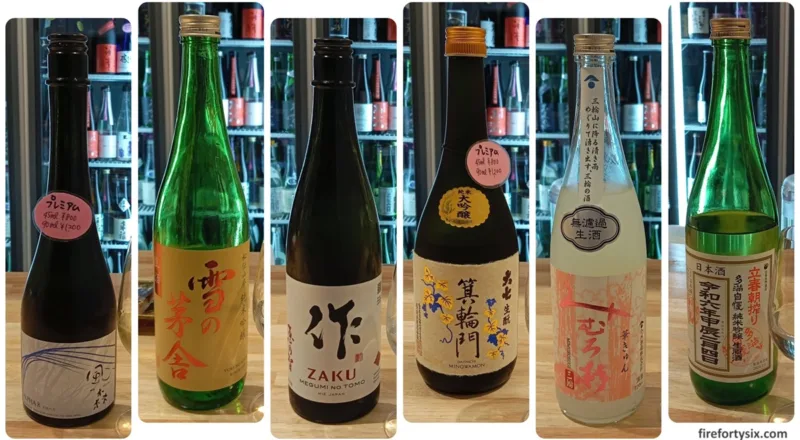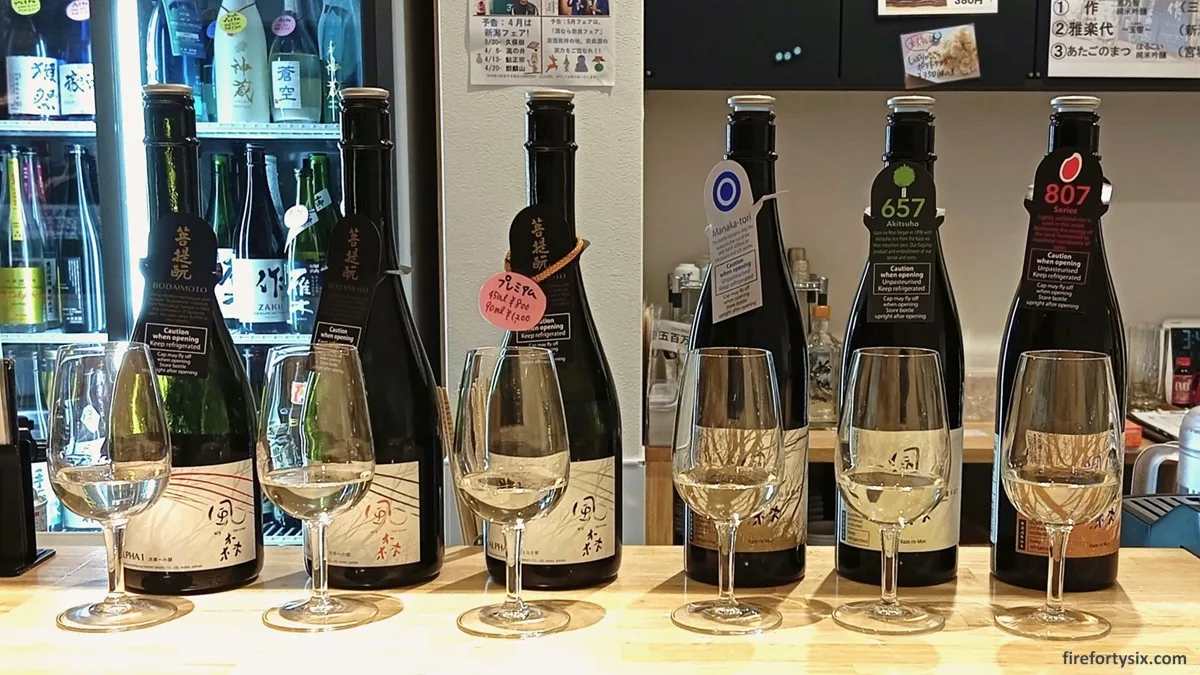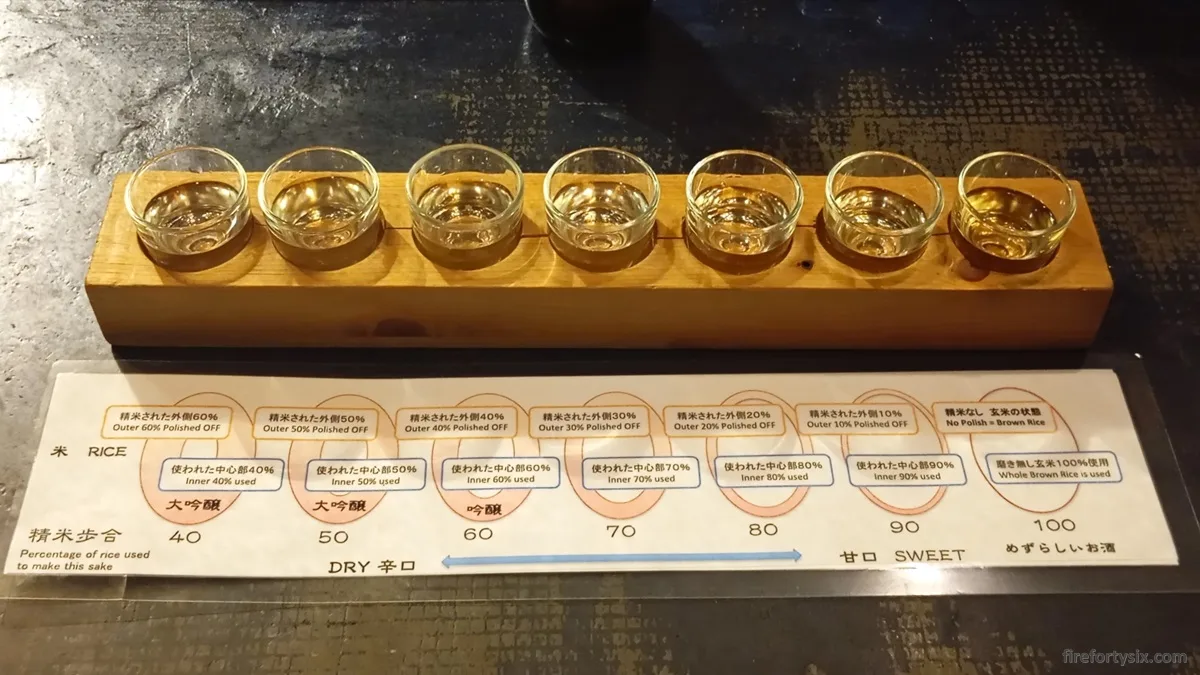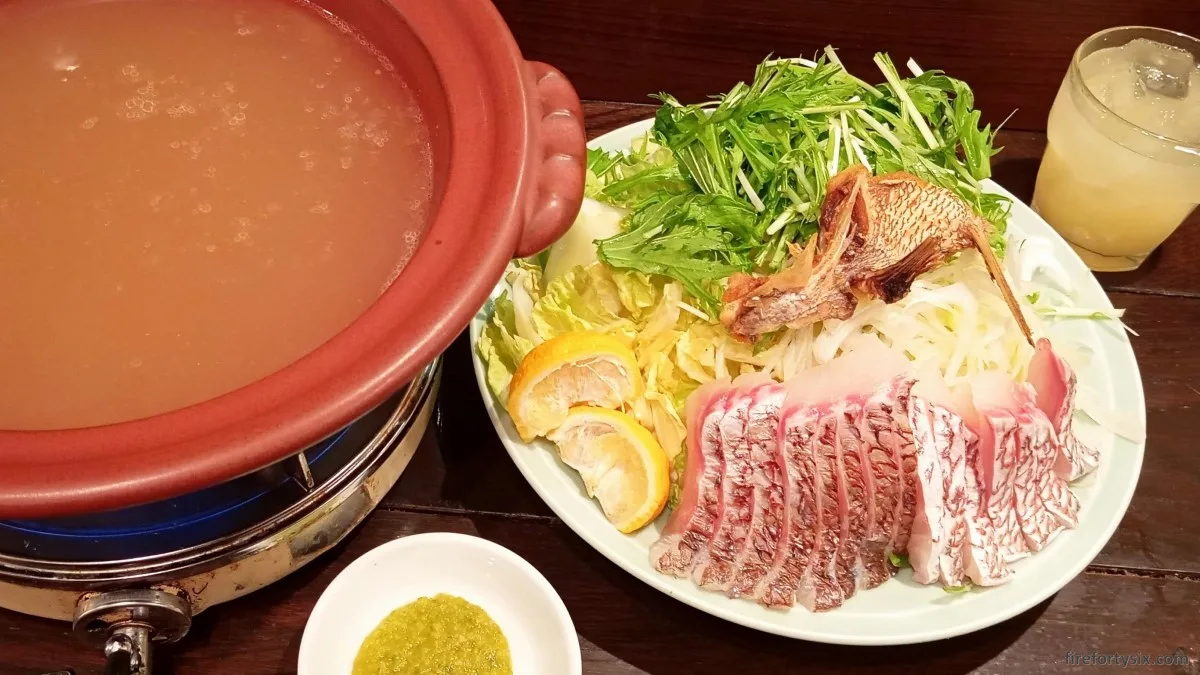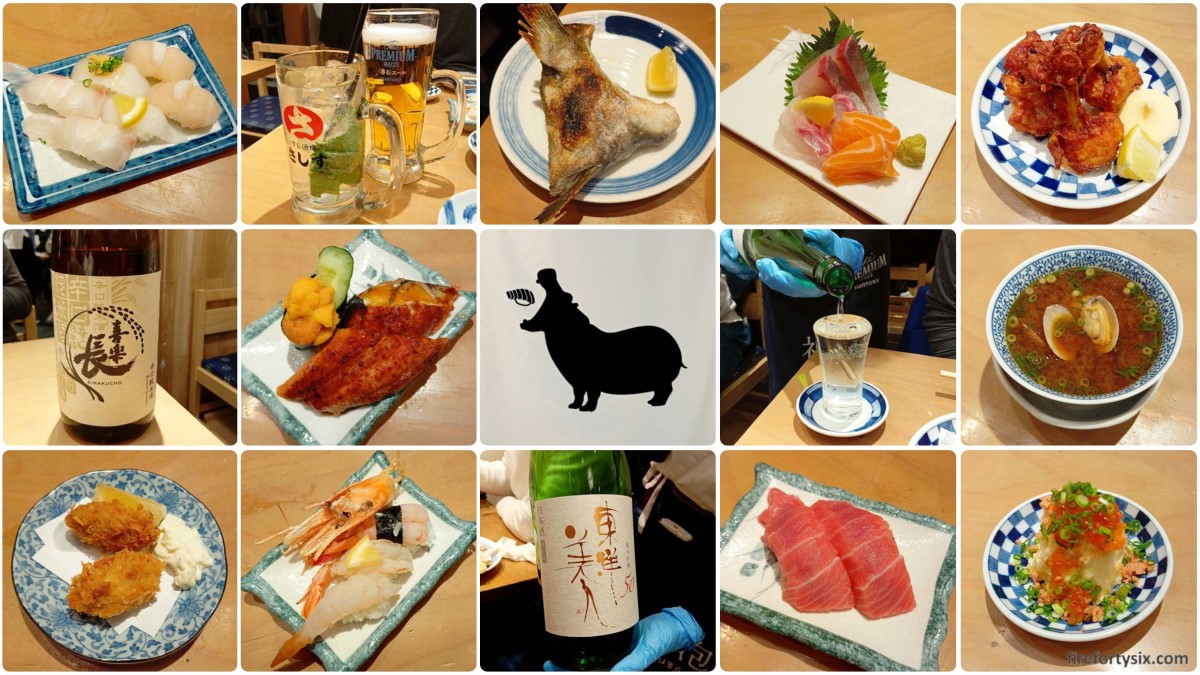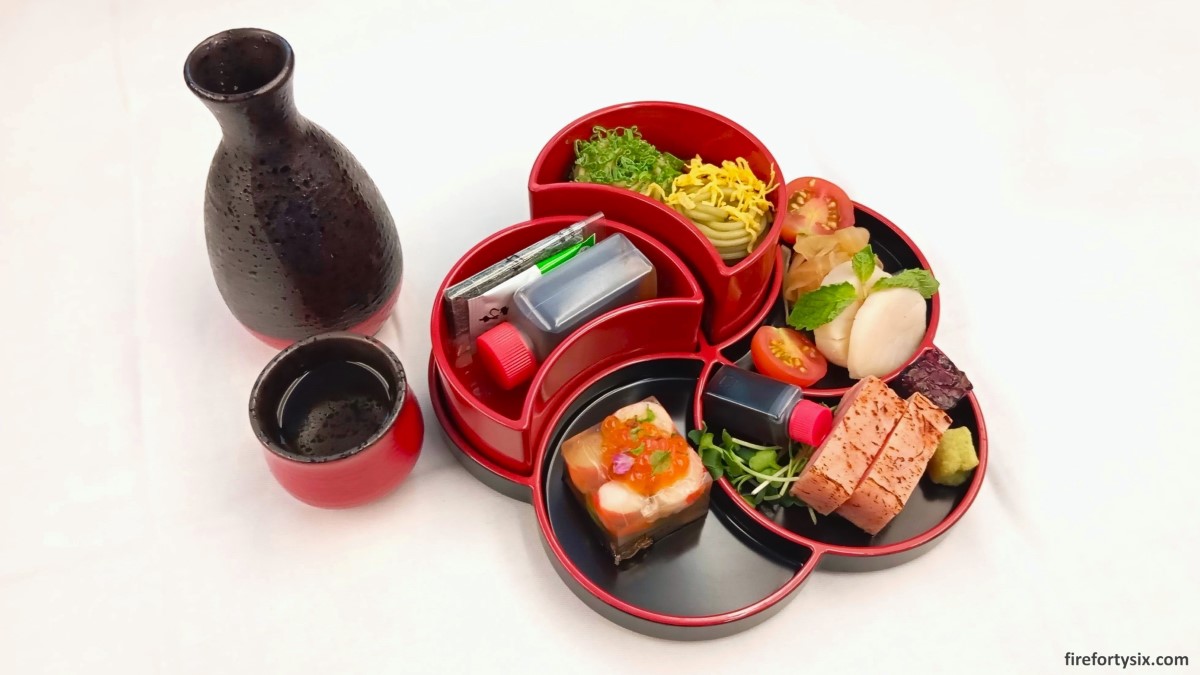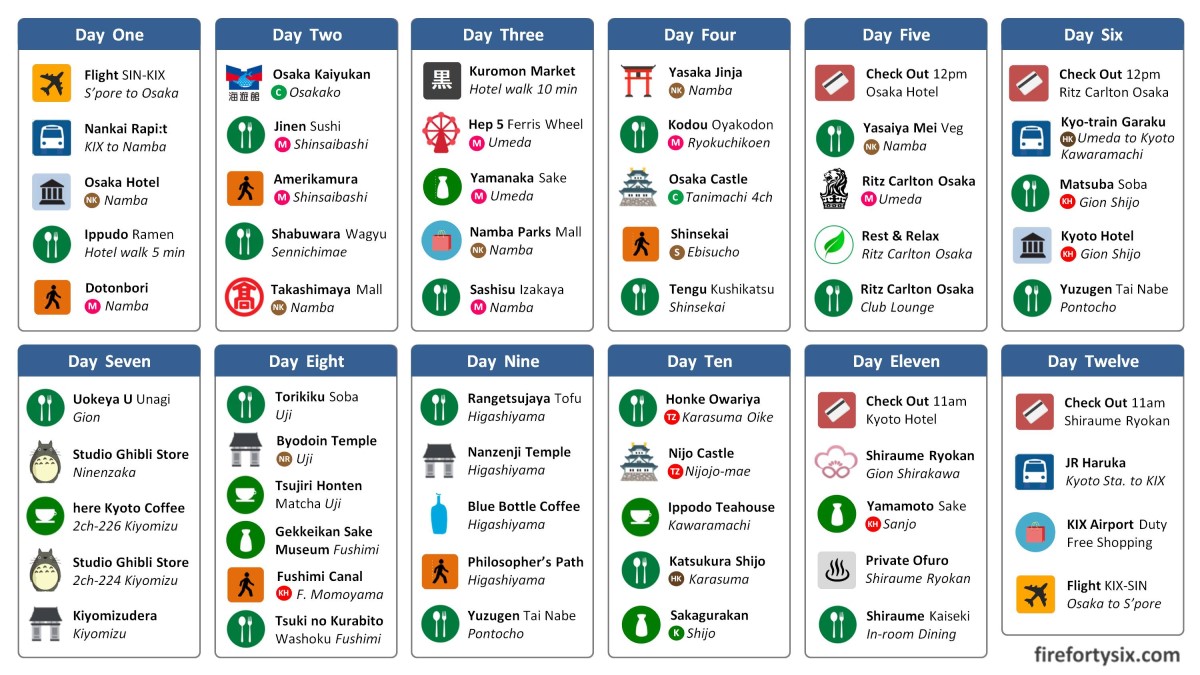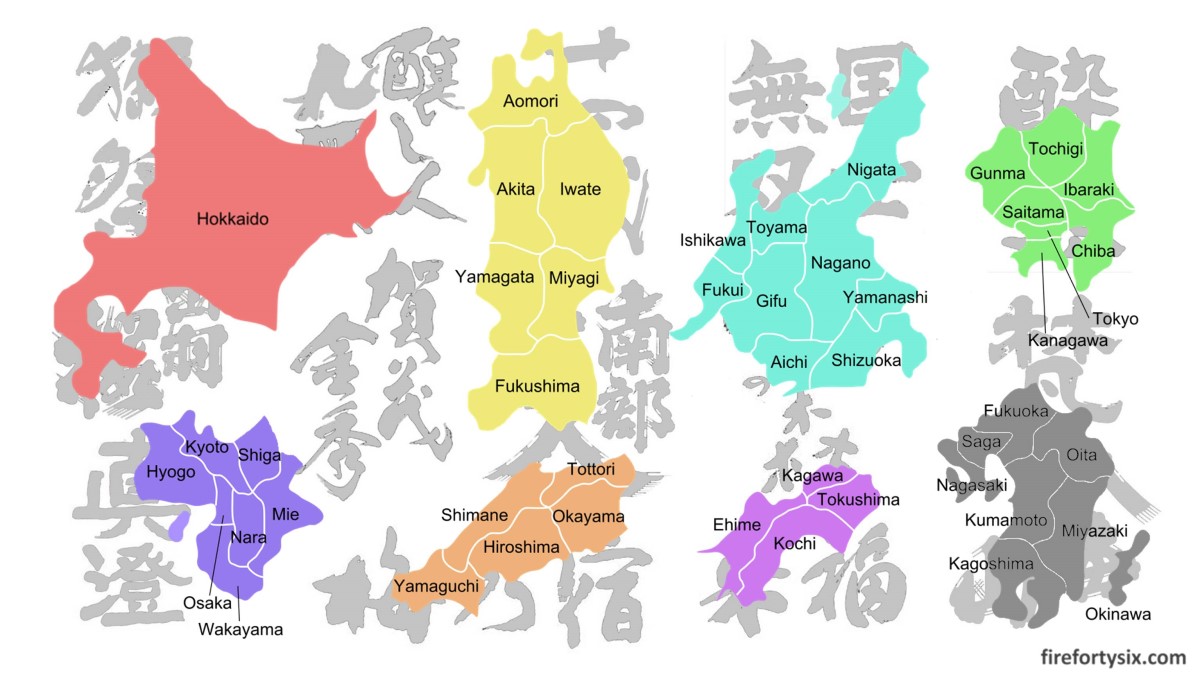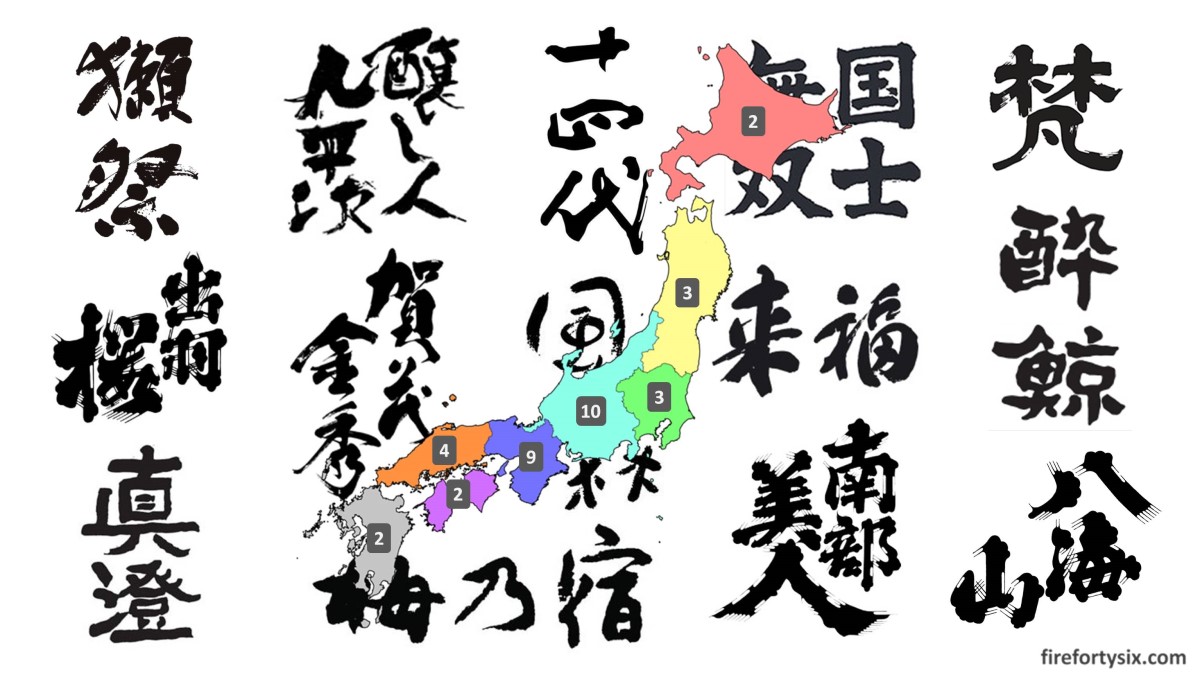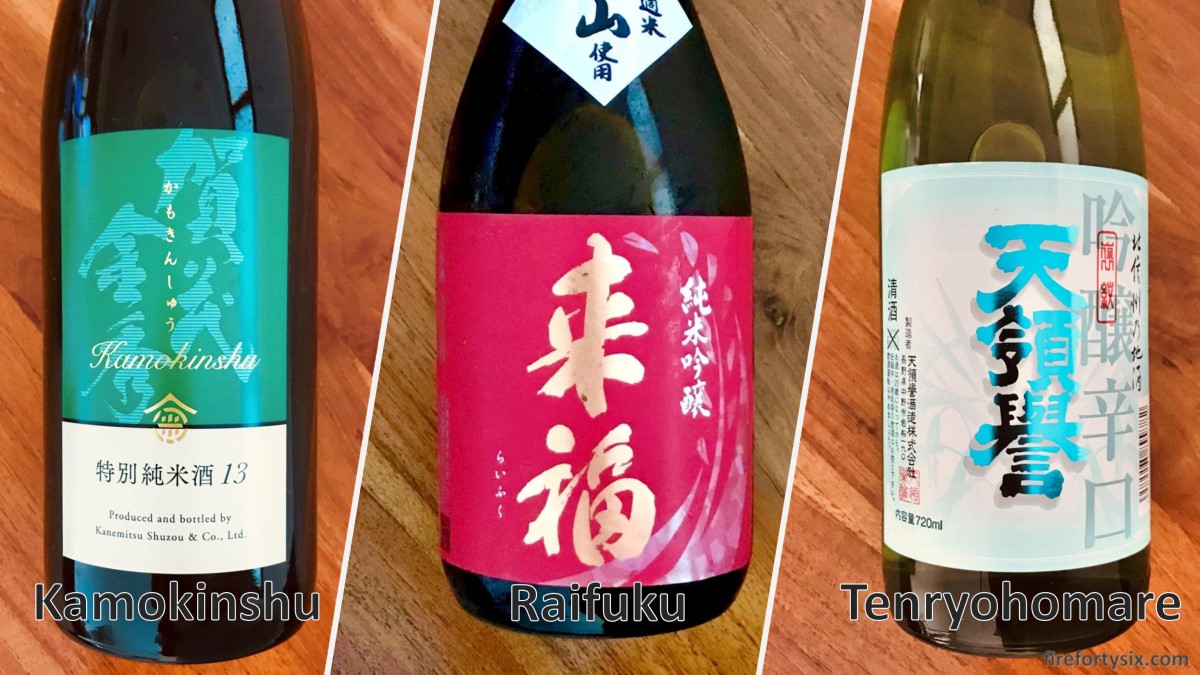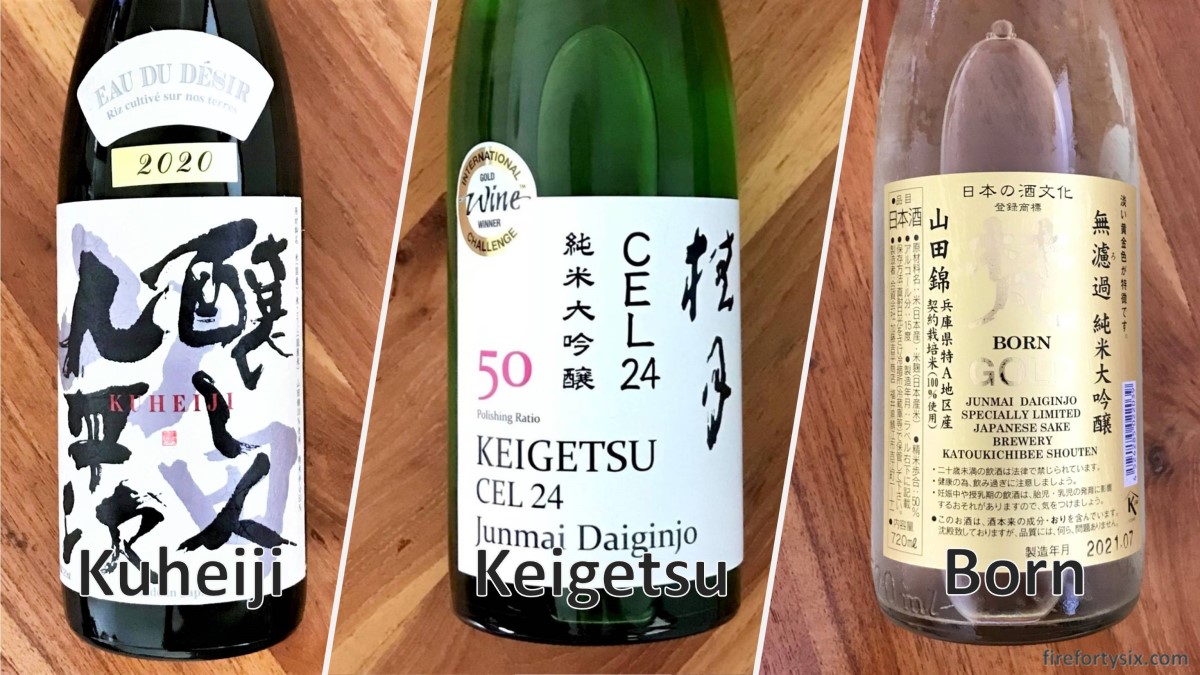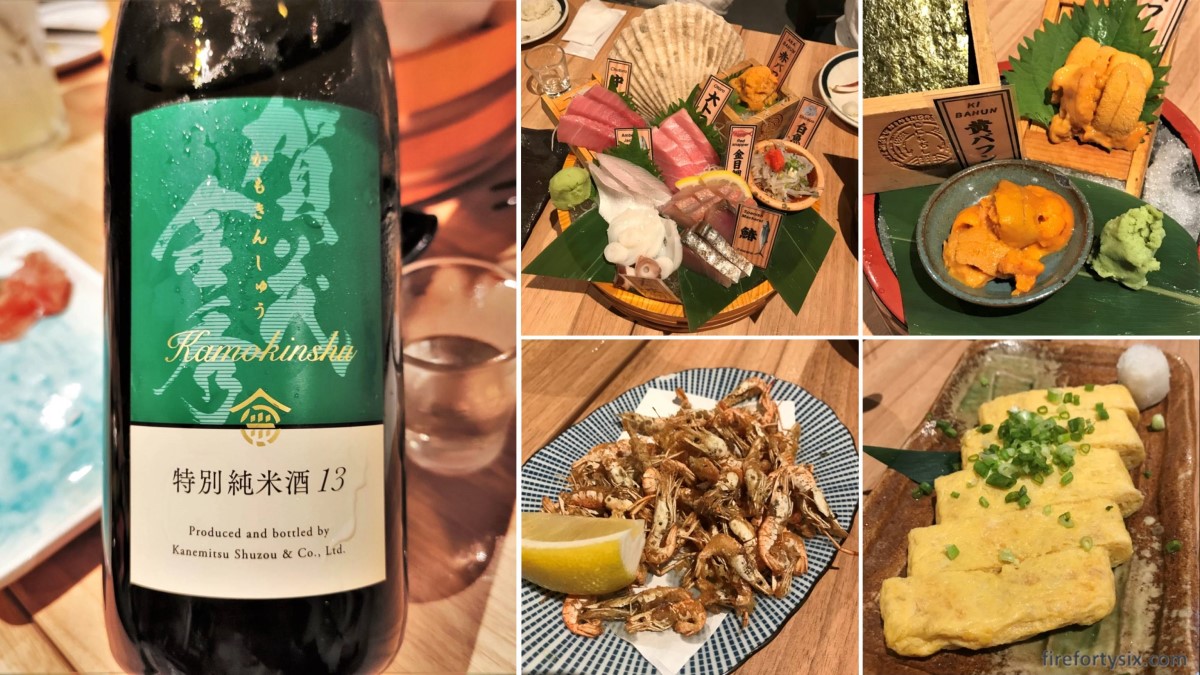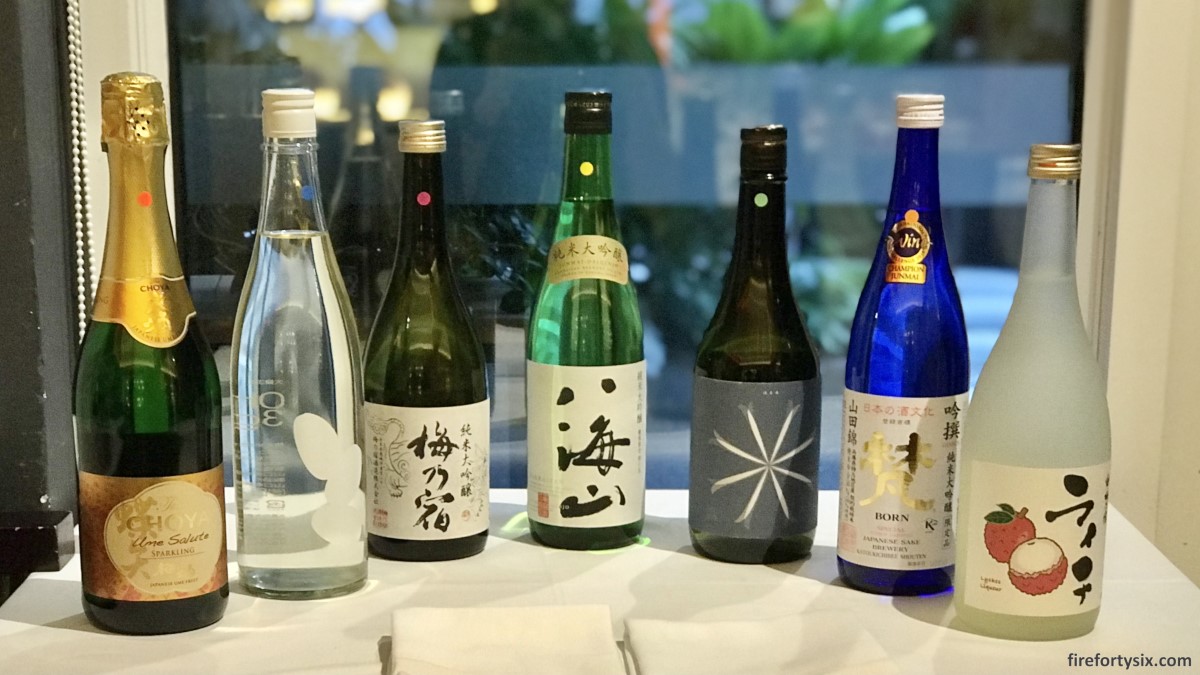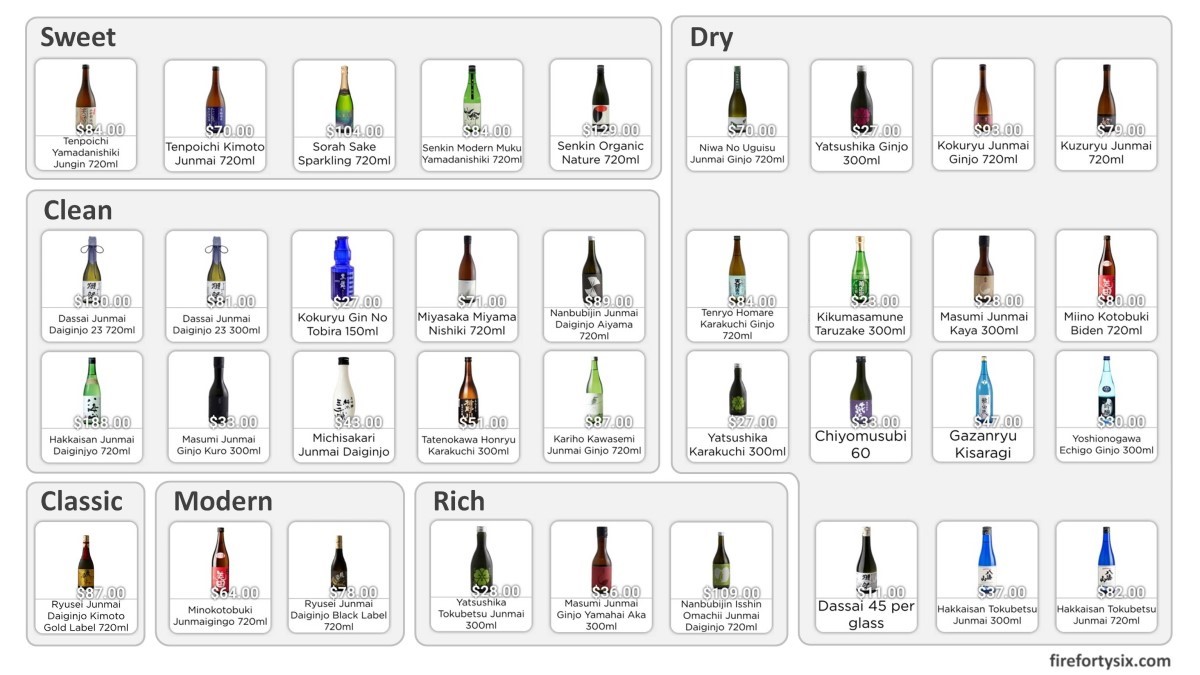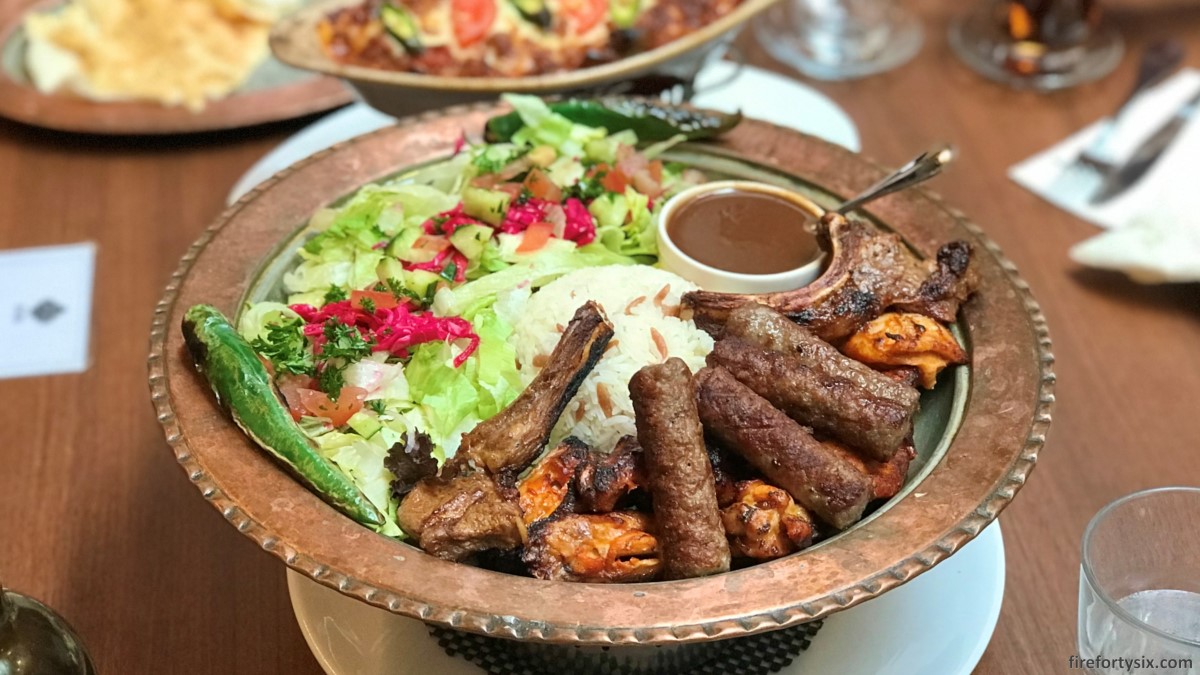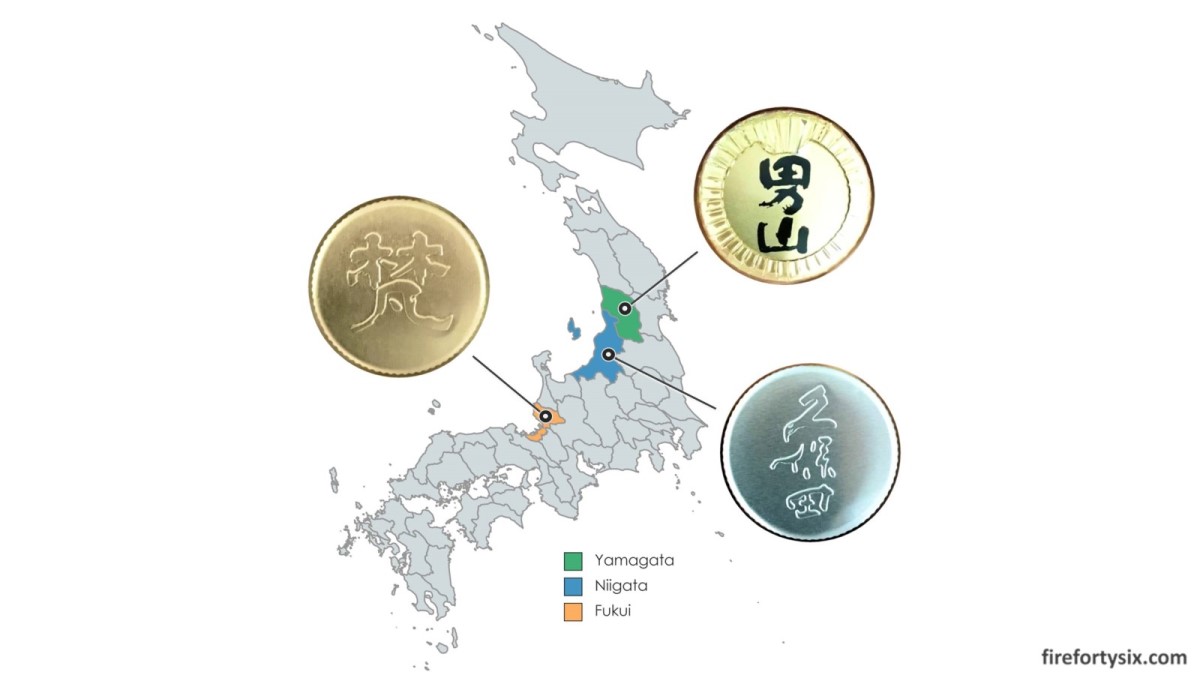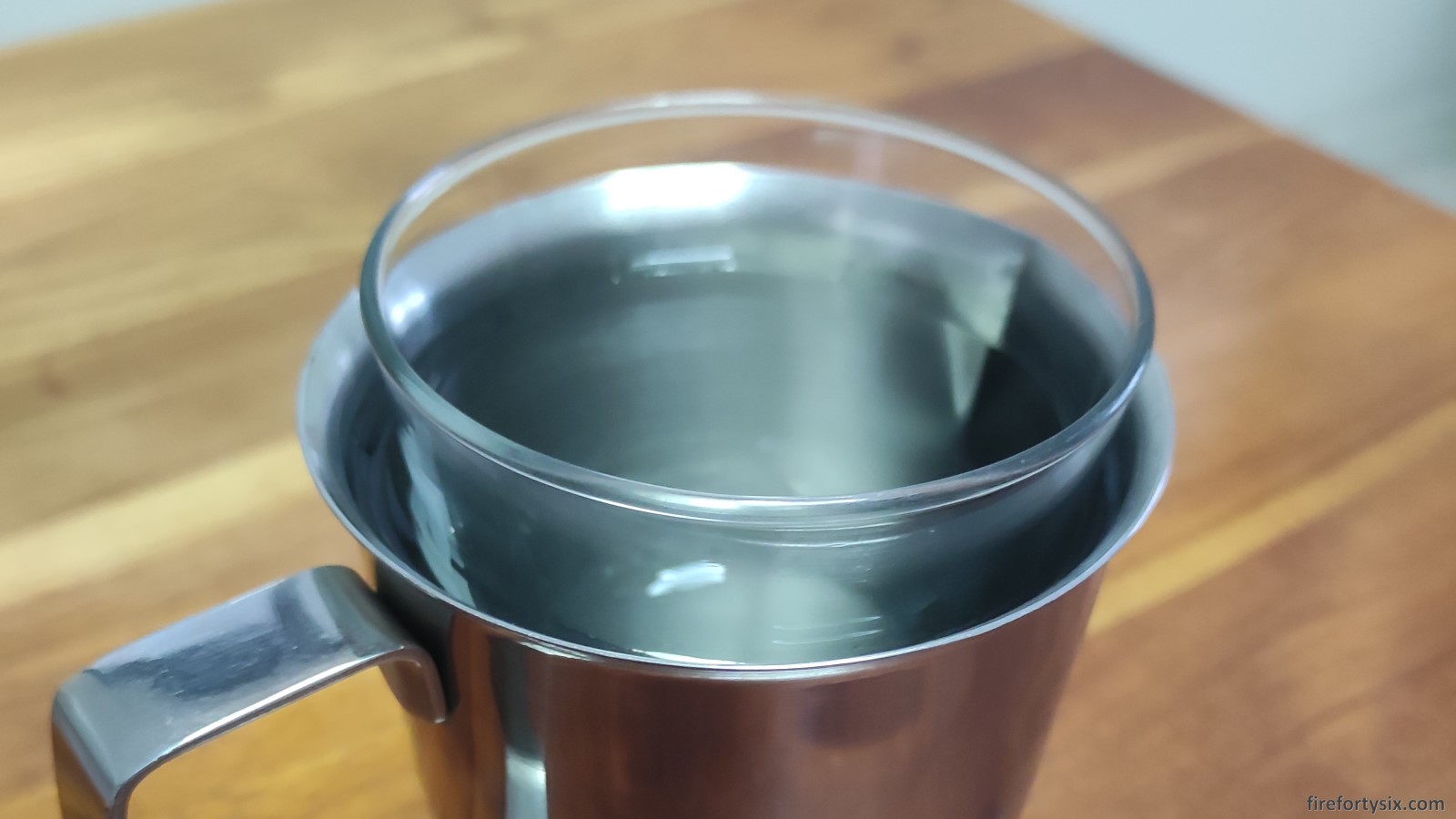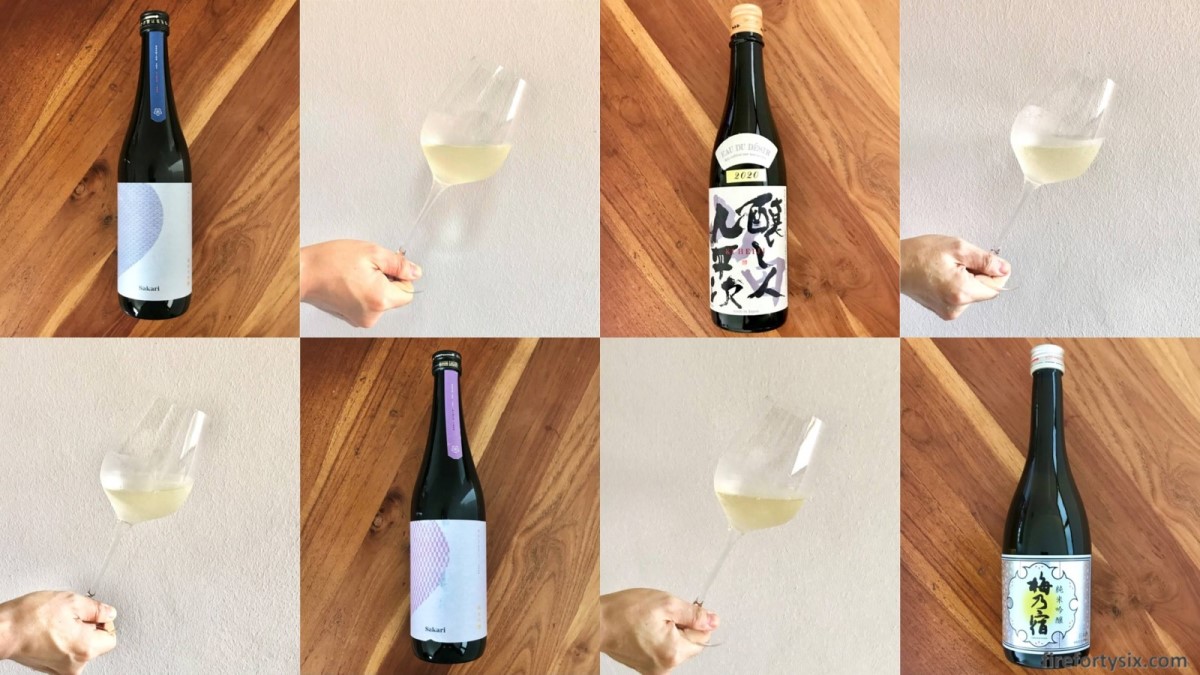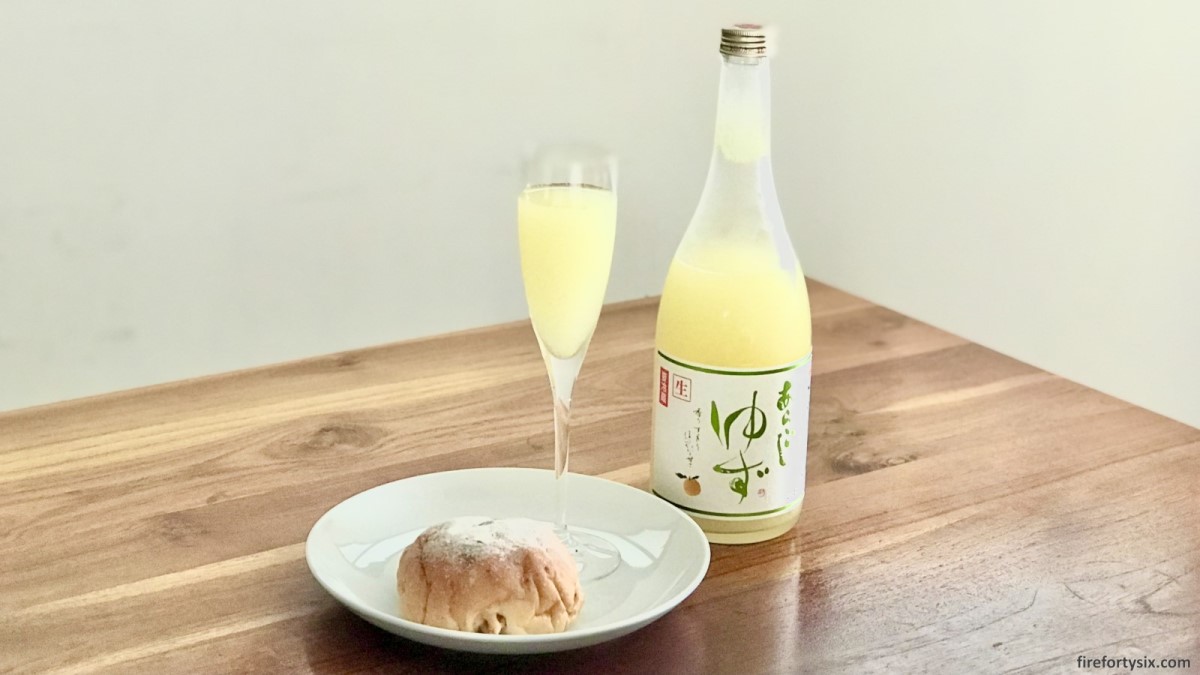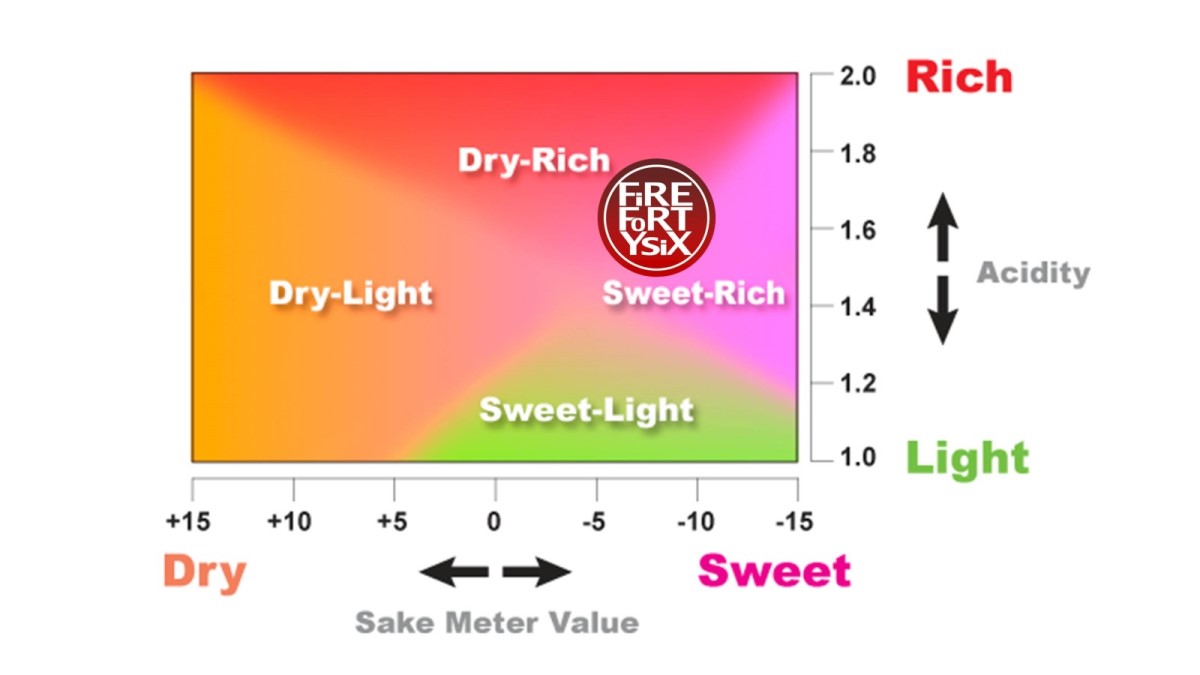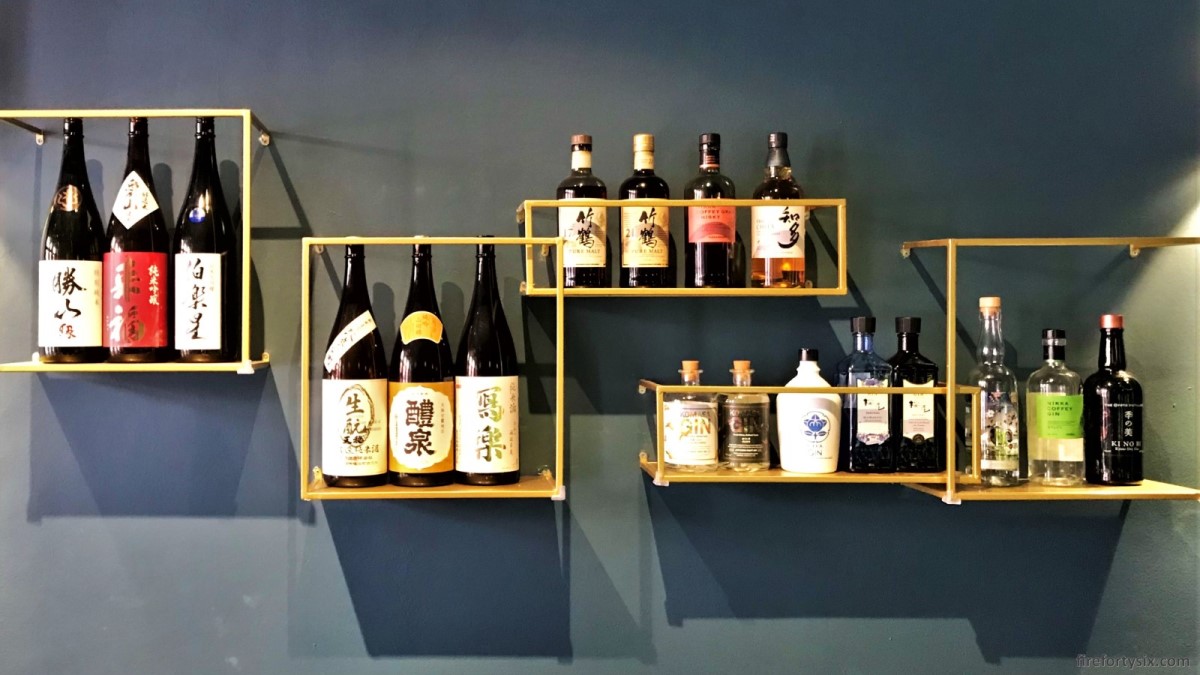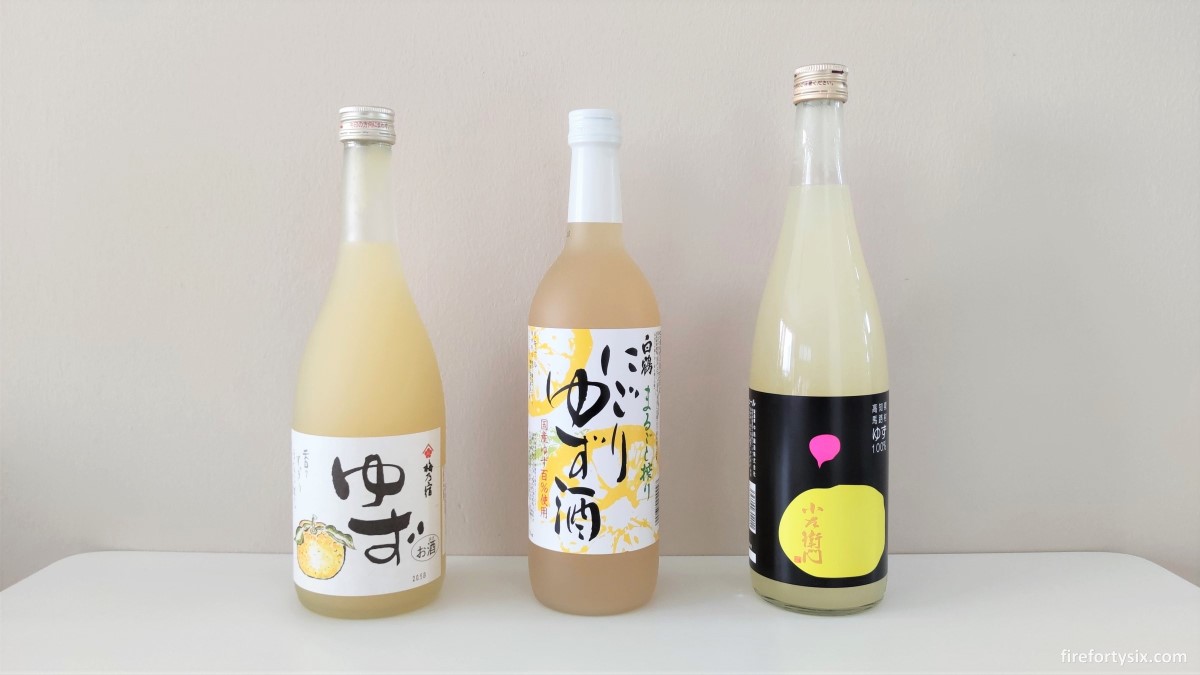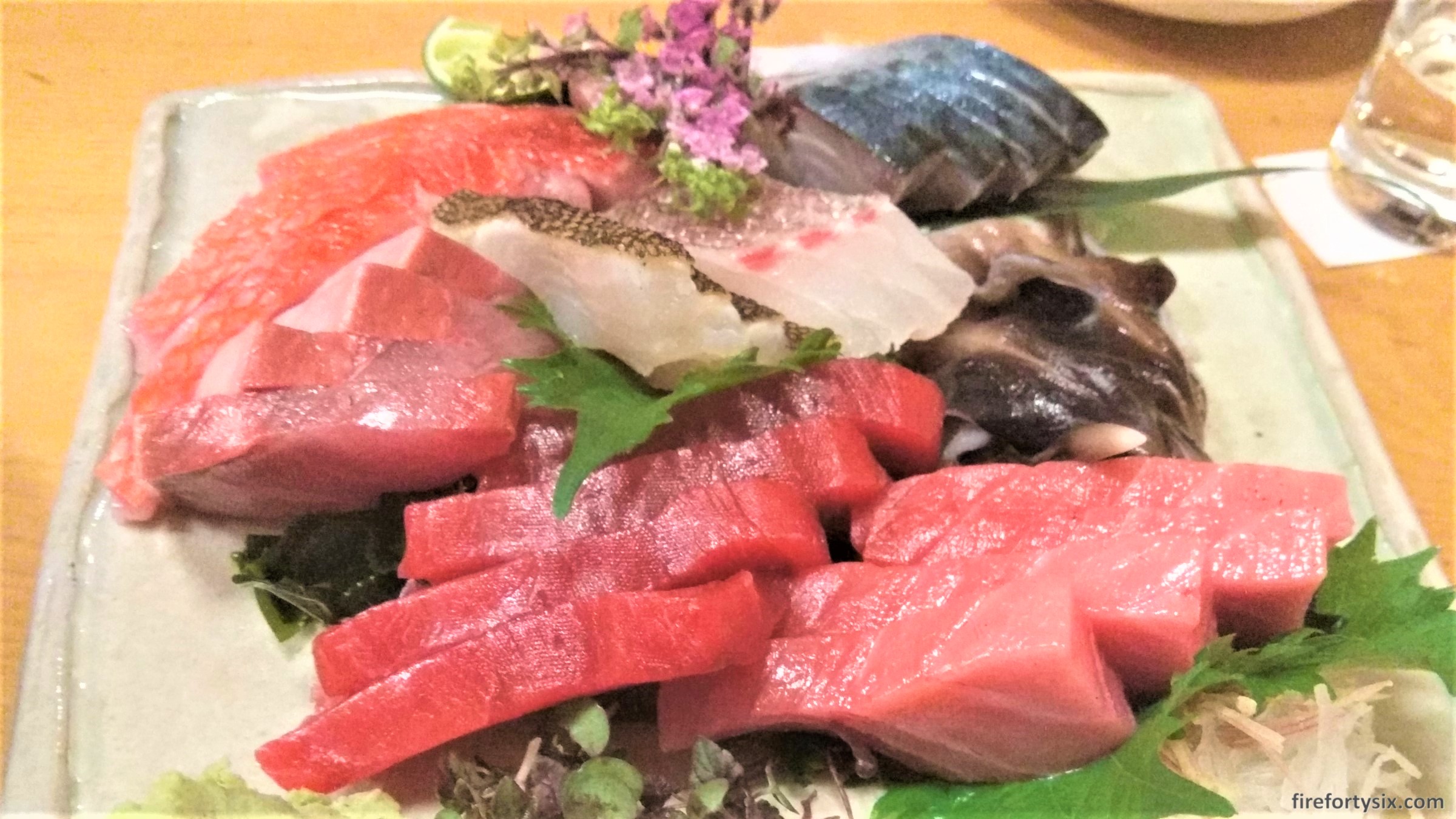Less than four hours after we left, we were back.
“Hisashiburi,” I said to Toshi-san, as we stepped through the doors of Asano Nihonshu Ten for the second time that day.
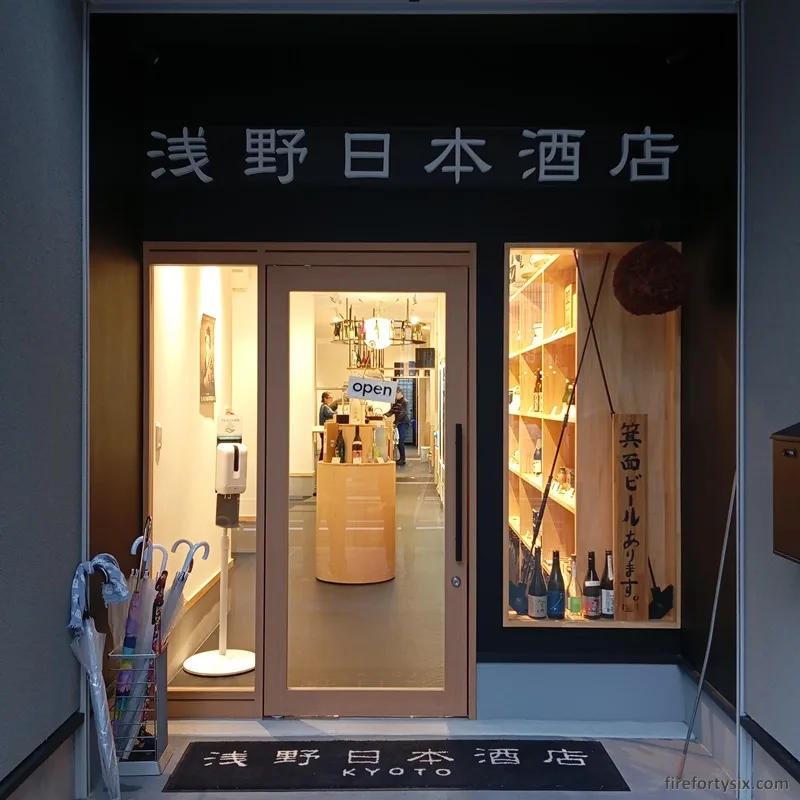
Barely suppressing a chuckle, he warmly ushered us to our “seats” at the standing bar counter.
A few hours earlier, we had spent an enjoyable afternoon sampling six different Kaze no Mori sakes in one sitting.
Just as we were about to leave, Toshi-san brought out a bottle of the Alpha 8. He highlighted that it wasn’t available to retail customers, and was only supplied to sake bars and izakayas.
I knew, then and there, that I would be back. I just didn’t realise that it would be so soon.
For the rest of the afternoon and all throughout dinner, the idea of returning for a glass of the Alpha 8 continued to fester. It was an itch that refused to go away; one that demanded to be scratched.
So, scratch it I did.
Kaze no Mori (風の森) Alpha 8 Junmai
Made from 100% brown rice that was completely unpolished, it had a rich golden hue and gave off a unique woody rice smell.
Unlike most of the sakes we’ve had, it didn’t carry fruity notes of melon or banana. Instead, the first sip tasted like a homemade barley drink. It tasted nothing like the sake I knew.

“Popcorn? Caramel? Marshmallow?” went through my mind, as it struggled to process the alien flavour. I must have blurted my thoughts out loud, because Toshi-san was, again, trying hard not to laugh.
It was definitely an experience, one that every sake lover should try at least once. In order to appreciate how diverse a drink made from a simple ingredient like rice can be.
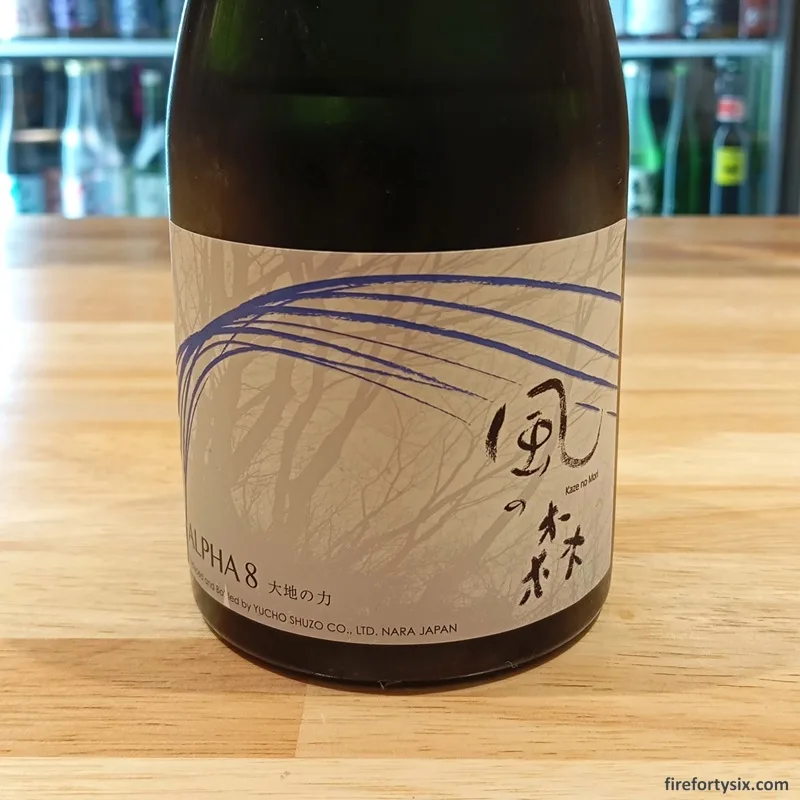
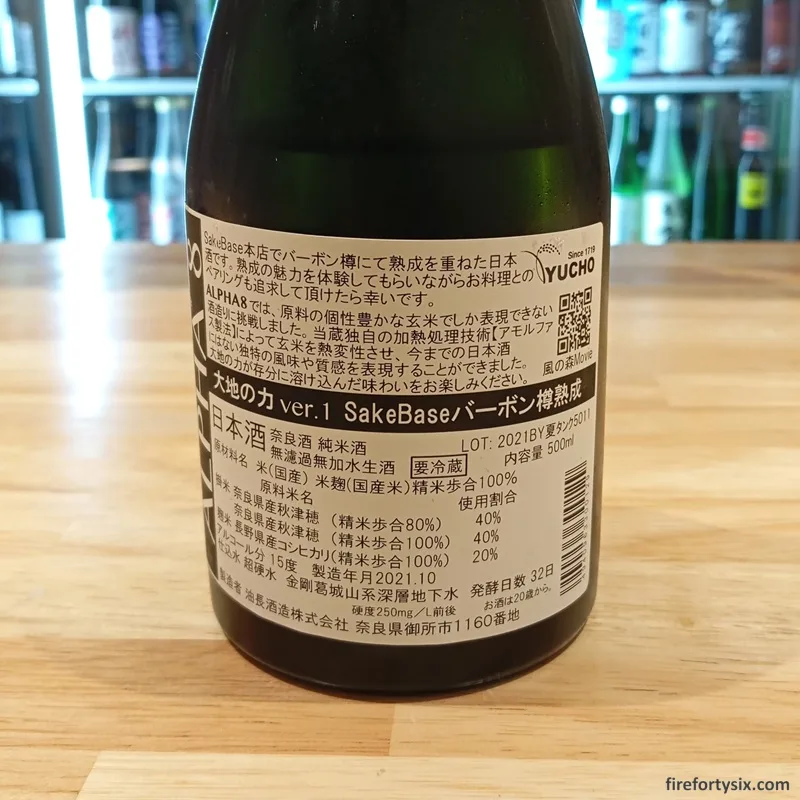
Sake Bingo Card
With that out of the way, I could focus on my broader mission — to drink sake from all the 47 prefectures of Japan.
Before this Kansai trip, I had already covered 17 of them based on what I could get my hands on in Singapore. Progress was slow, but steady.
After we landed, I kept track of the sake we had and diligently crossed off every new prefecture. During a hasty stop at a sake bar in Umeda train station, I managed to cross the halfway mark.
It was also when I achieved my very first bingo on my bingo card, crossing out Aichi (愛知) to Mie (三重) for a horizontal line right through the middle.
The streak continued, and reached 27 prefectures before I accidentally stumbled into Asano Nihonshu Ten.
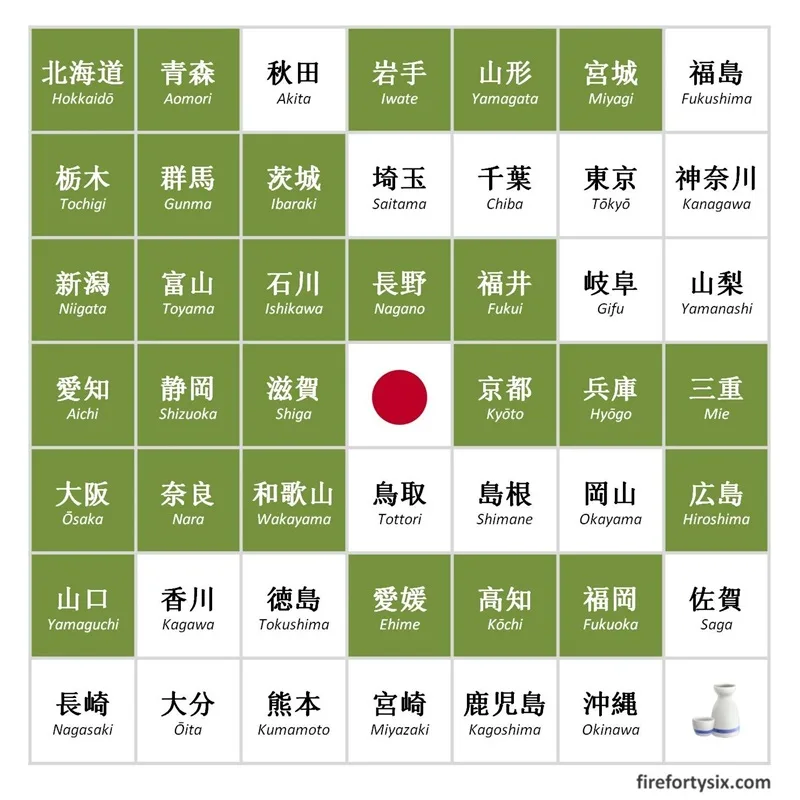
I showed him my bingo card to Toshi-san and briefed him on my bucket list. He immediately roped in Kohata-san, who was also on duty that night.
“Sugoi!” she exclaimed, clearly impressed by the antics of this crazy enthusiastic gaijin. My solo mission had officially turned into a team sport.
Daishichi (大七) Minowamon (箕輪門) Junmai Daiginjo
Daishichi is a well-known brand in Singapore and its premium Minowamon junmai daiginjo is readily available online. Unsurprisingly, it carries a hefty price tag back home.
I now had the chance to sample a glass to make sure it was worth shelling out for a bottle. The added bonus was that it was from Fukushima (福島), which occupied an empty spot on the top right corner.
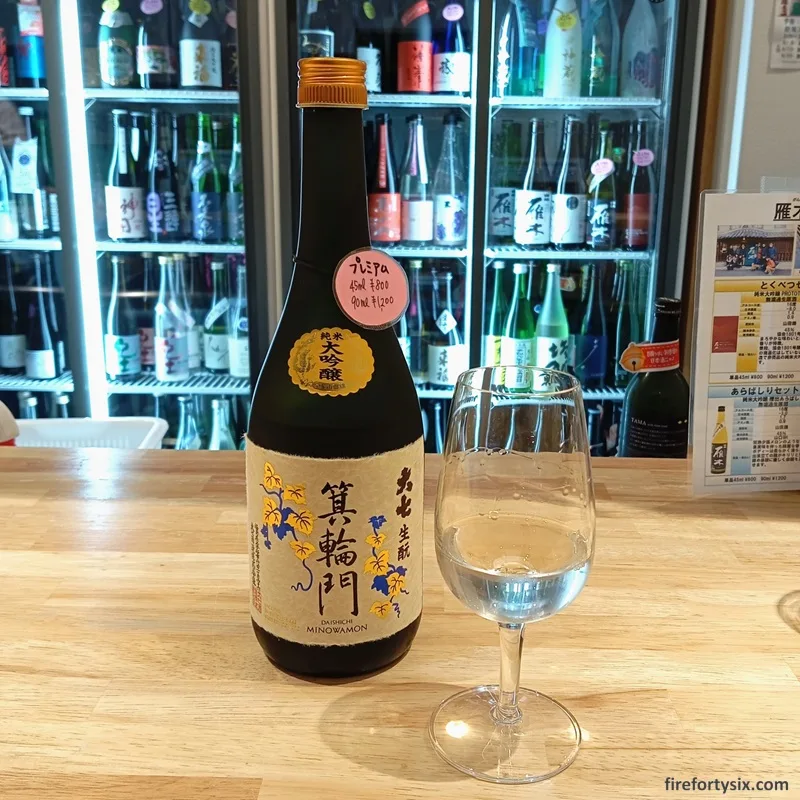
The smell was fragrant and rich, with a taste that was full of umami yet surprisingly delicate. Okay, now I understood why this was such a highly sought after bottle.
It was going for less than half the retail price in Singapore, and I quickly asked Toshi-san to set aside a bottle for me. Spoiler alert, it wasn’t the only bottle I bought that night.
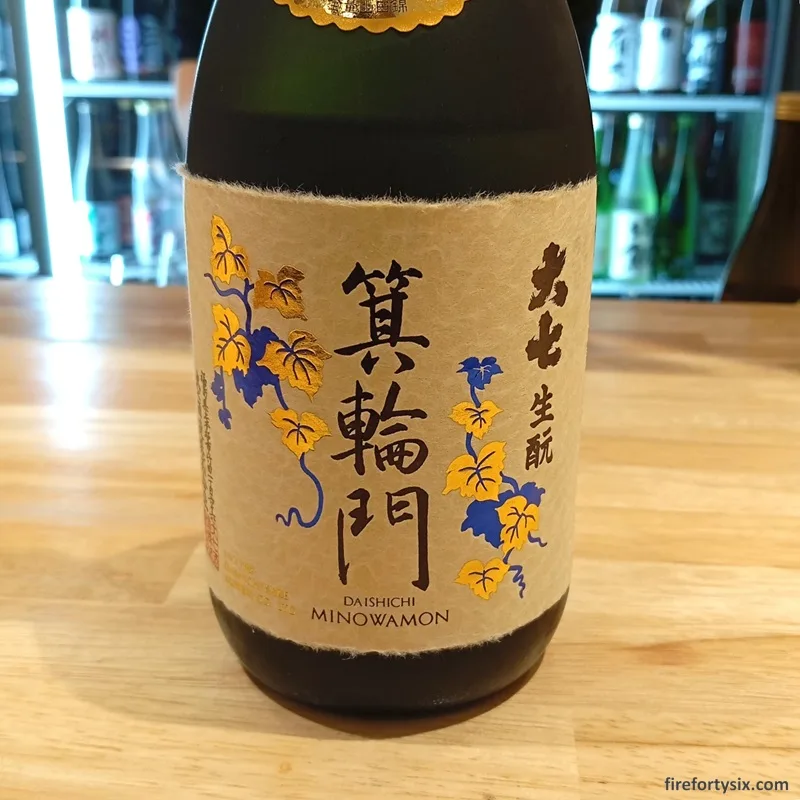
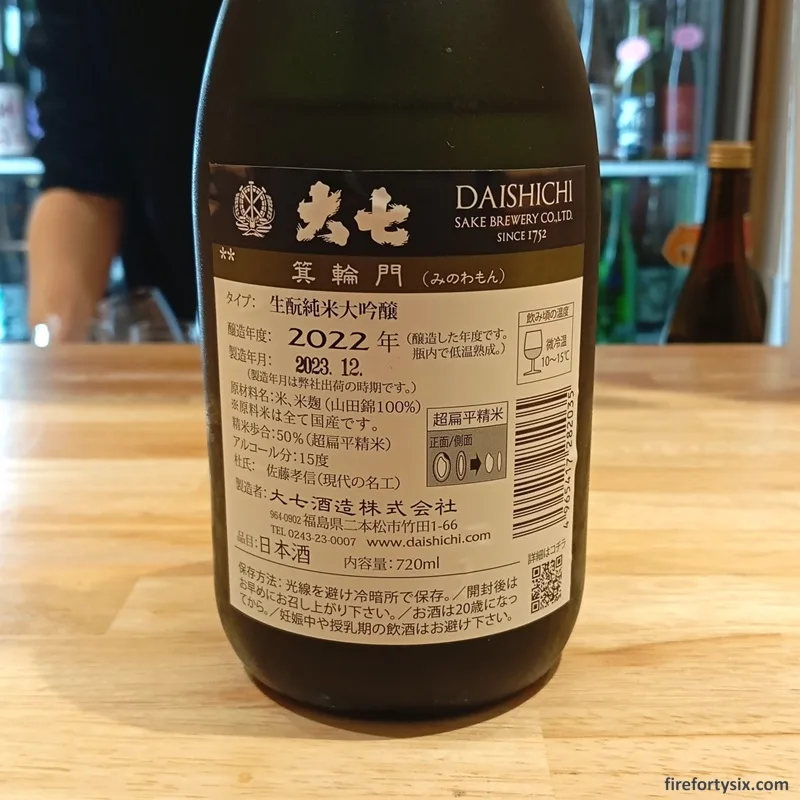
Yuki no Bosha (雪の茅舎) Hiden Yamahai (秘伝山廃) Junmai Ginjo
Unlike Daishichi, Yuki no Bosha from Akita (秋田) prefecture in northern Tōhoku is not commonly distributed in Singapore.
I’ve come across it many times while browsing online sake communities on Reddit and Facebook, and the “Cabin in the Woods” was always highly regarded.
There were different bottles in the fridge, and I asked Toshi-san to recommend his favourite. He thought about it briefly and chose the Hiden Yamahai junmai daiginjo.
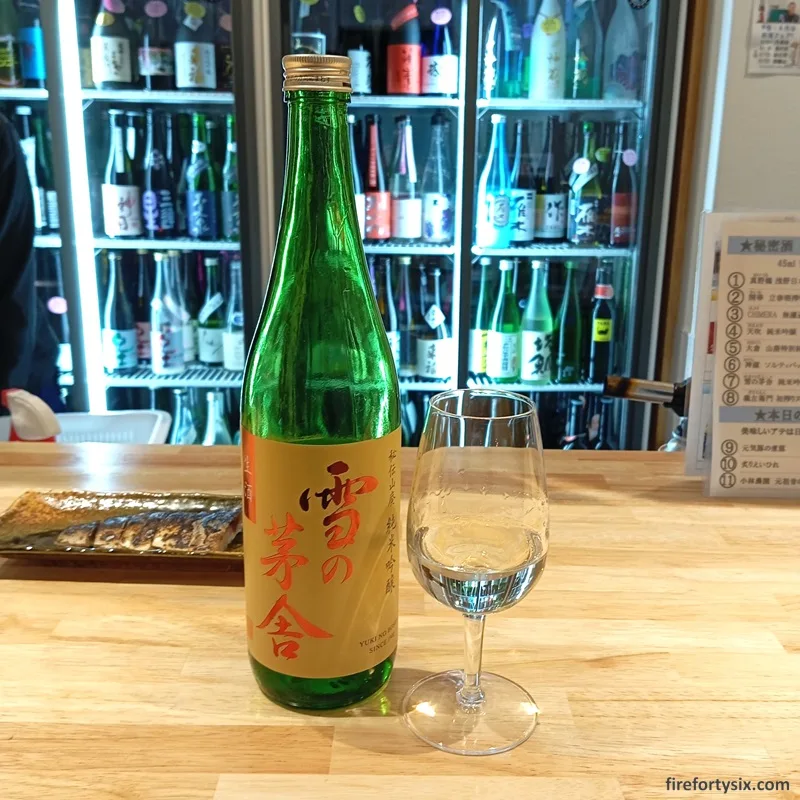
“Fruit juice!” was the first thought that went through my mind, and The Wife happily concurred. 90% melon, 10% banana and an utter delight to drink.
It overtook both the Keigetsu Cel24 and Born Gold and became our new favourite. And yes, I bought a bottle to bring home.
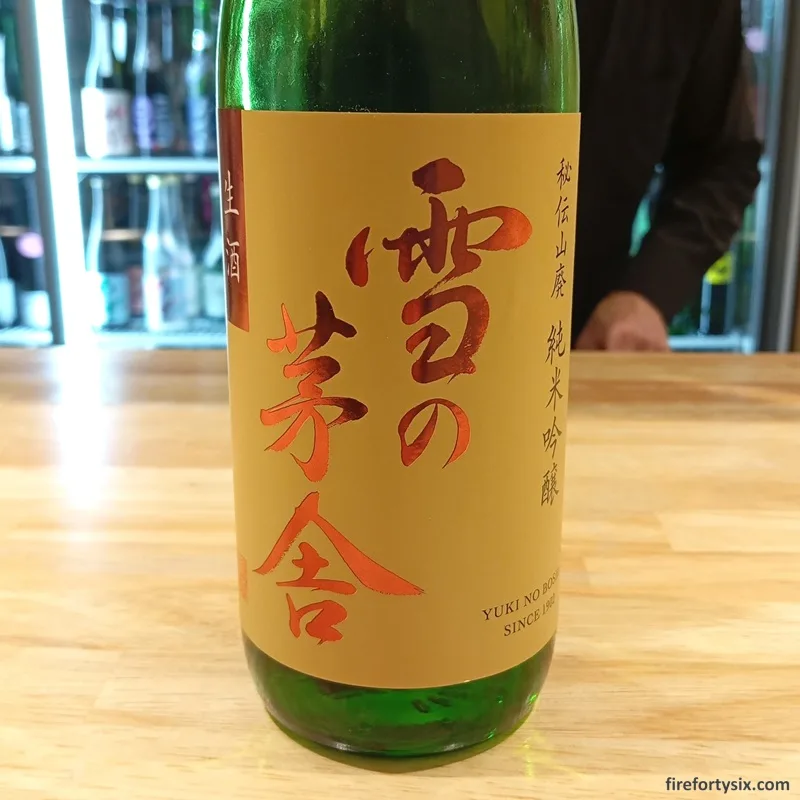
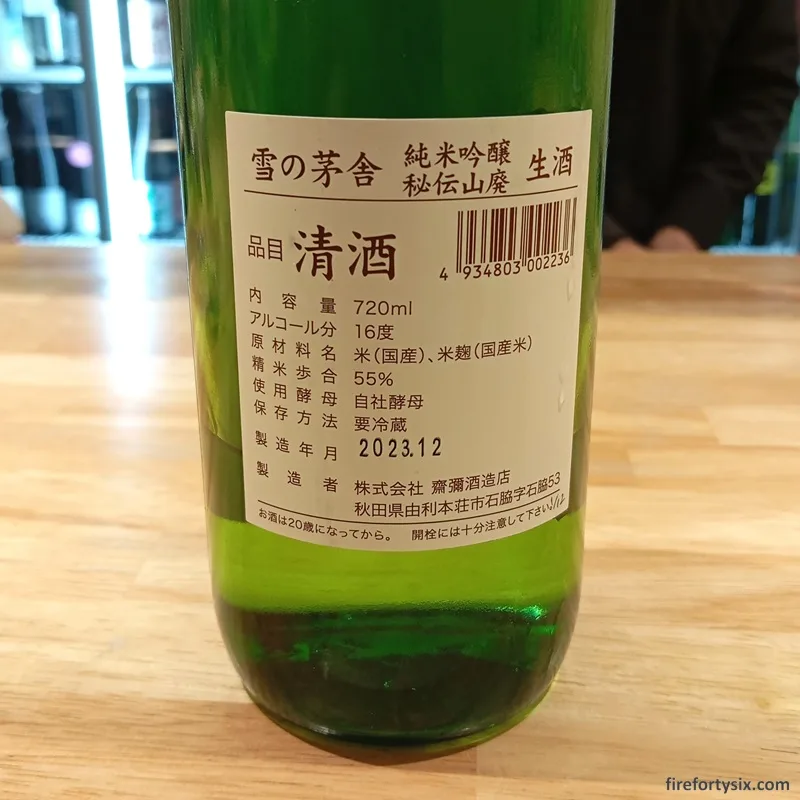
Tamajiman (多満自慢) Risshun Asashibori (立春朝搾り) Junmai Ginjo
Tokyo doesn’t have many sake breweries, so I threw Toshi-san and Kohata-san a challenge. It took them a while to find me a sake from the capital of Japan, but they delivered.
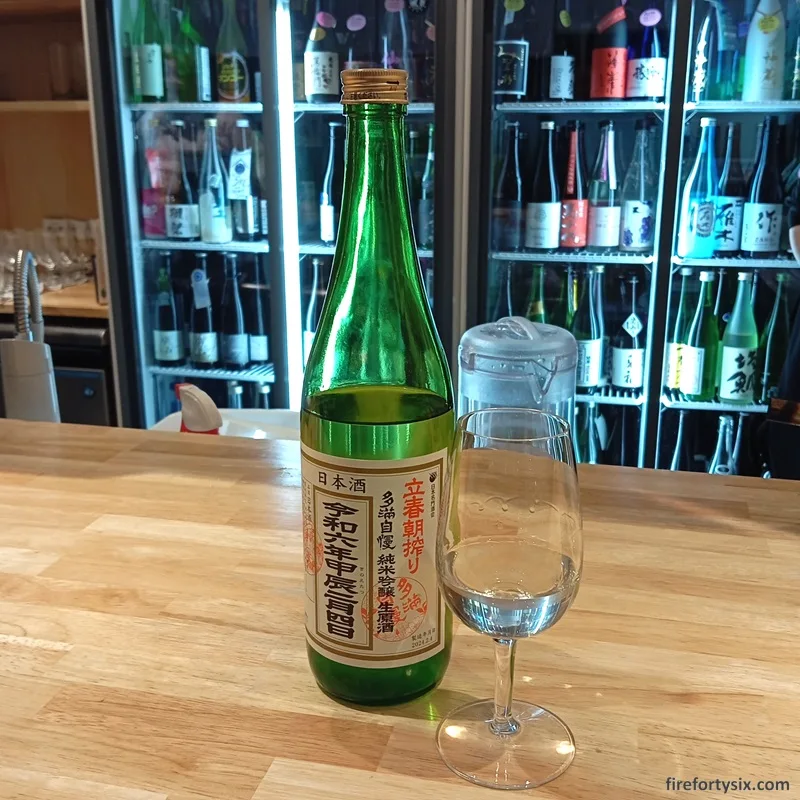
The Tamajiman was light and refreshing, and while it didn’t match up to the Daishichi and Yuki no Bosha, it was friendly and easy to drink.
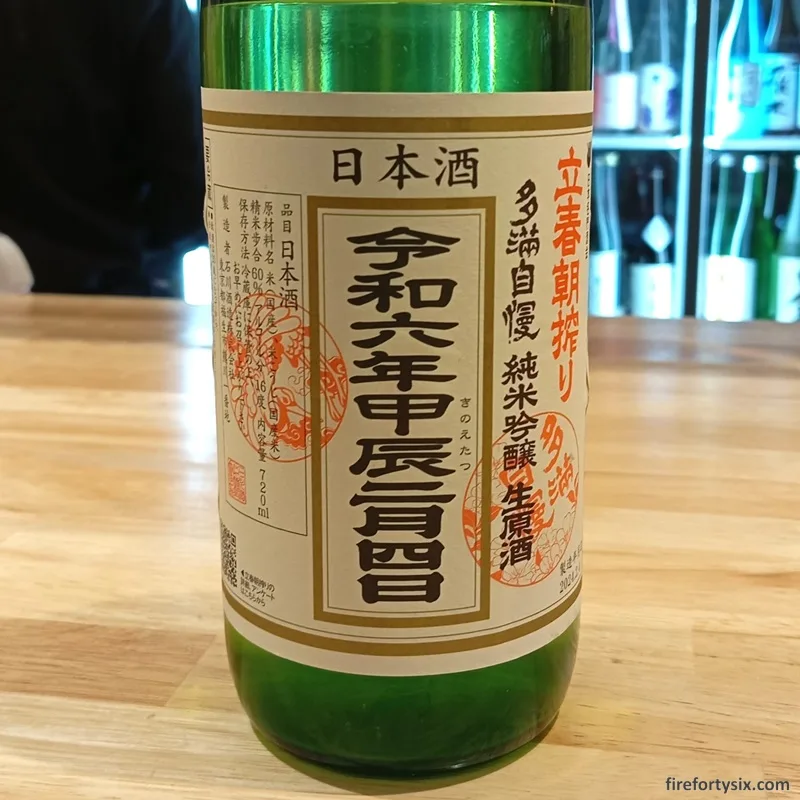
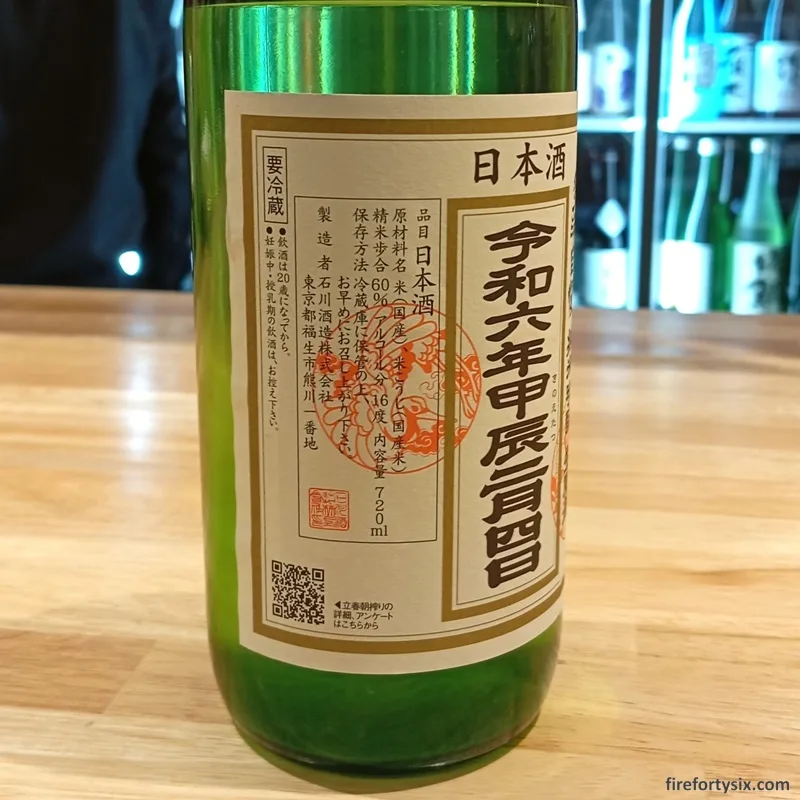
I was curious about the bottle label, because the design was like nothing that I’d seen before.
Toshi-san explained that it was a special type of sake produced to celebrate the arrival of spring, that was released by breweries all around the country at the same time.
To illustrate the point, he pulled out three other similar bottles and placed them in front of us as examples.
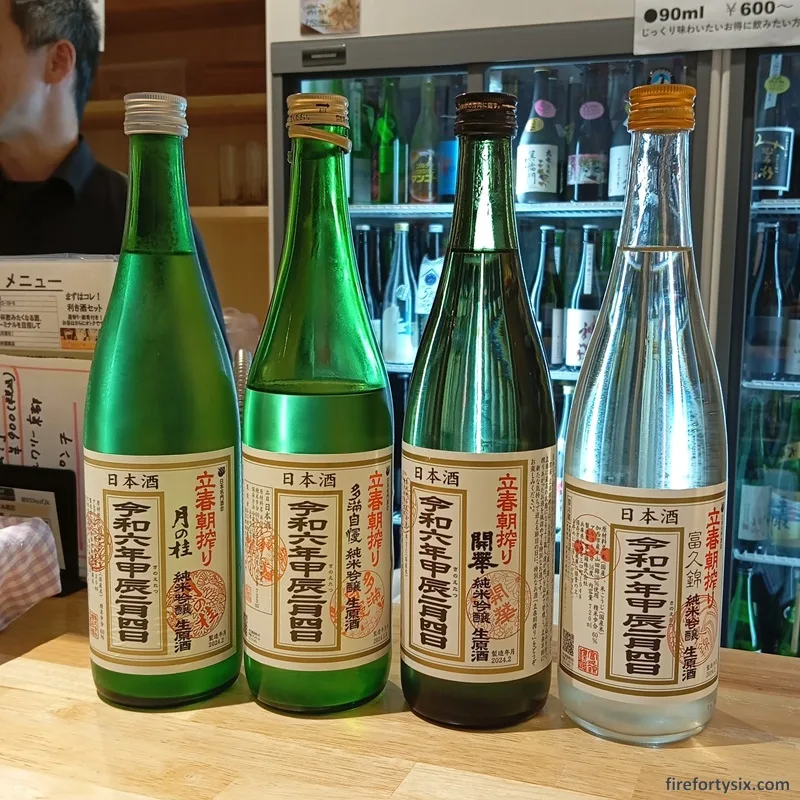
He also reminded me to update my bingo card, and I happily reported back that I had achieved my second bingo on the first horizontal line.
Looking back, I think he already knew and just wanted to make sure that I did too.
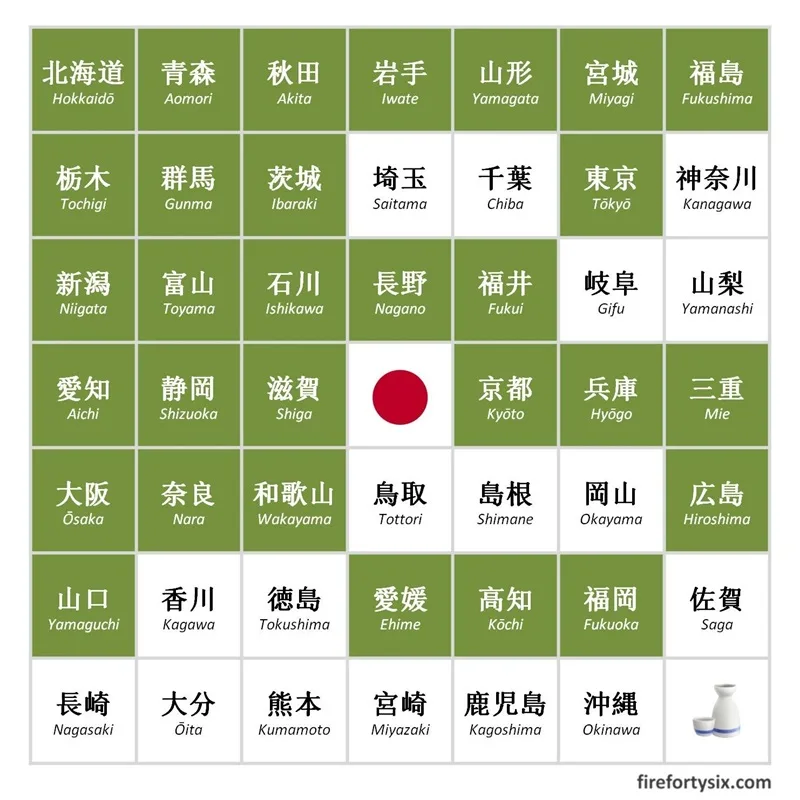
Mimurosugi (みむろ杉) Hanakyun (華きゅん) Junmai Ginjo
“Kohata-san, which is your favourite sake?” I enquired. She must have been anticipating my question, because without missing a beat, she presented a bottle of Mimurosugi Hanakyun.
Since it was cloudy, I commented that it was a nigori sake. She politely corrected me and said that it was not nigori, but origarami sake instead. Apparently it’s filtered slightly differently, resulting in a cleaner taste.
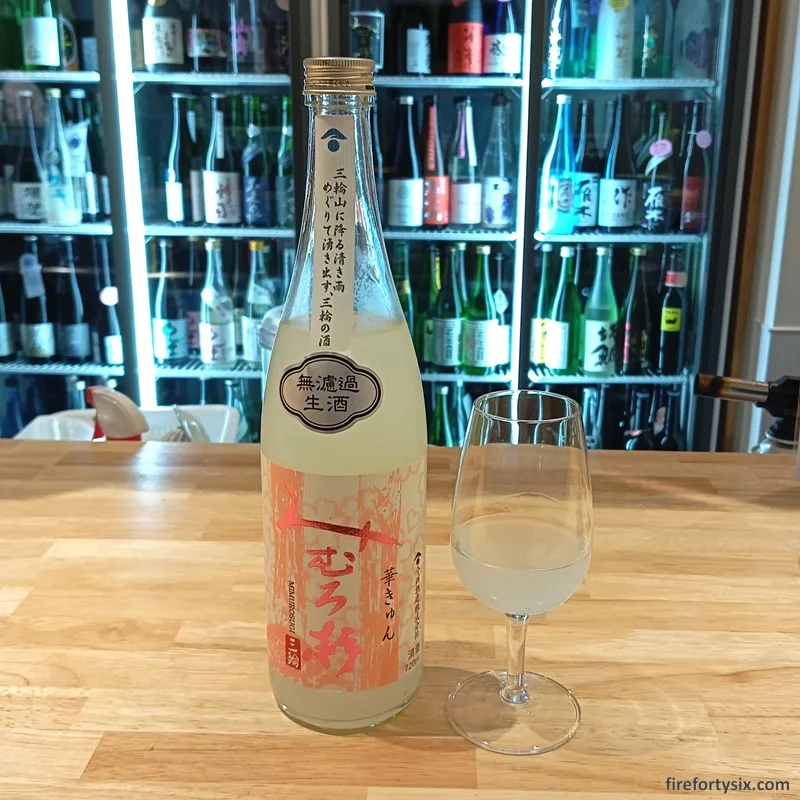
The subtle difference was lost on us, but the important thing was that it was smooth, slightly sparkling and very oishii.
It reminded The Wife of nectarine, a fruit that I didn’t know of and had to google (it’s like peach, but without the fuzz).
So did we buy a bottle? Funny you asked, because we certainly did.
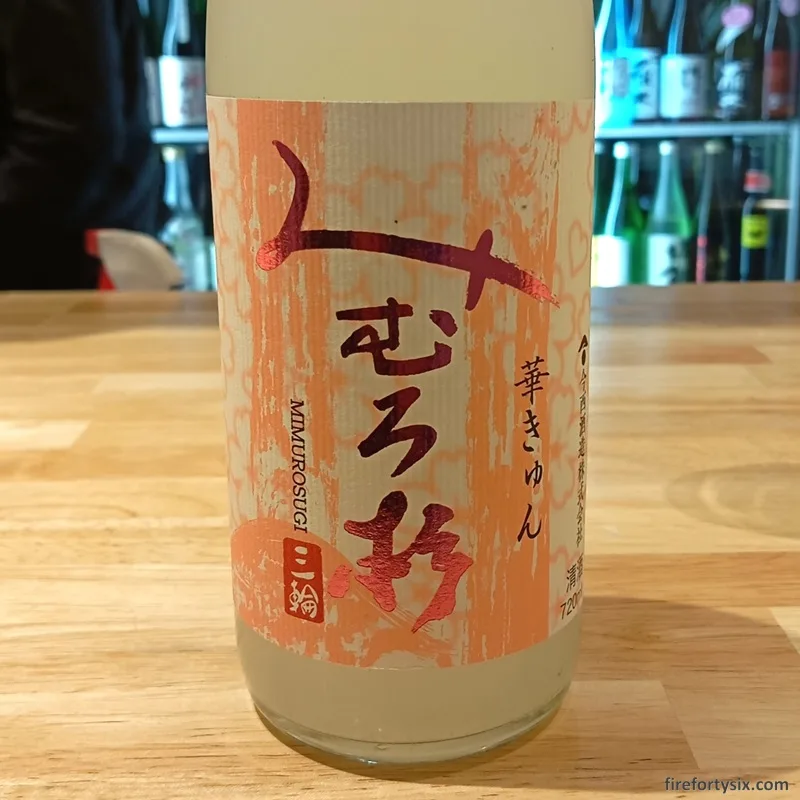
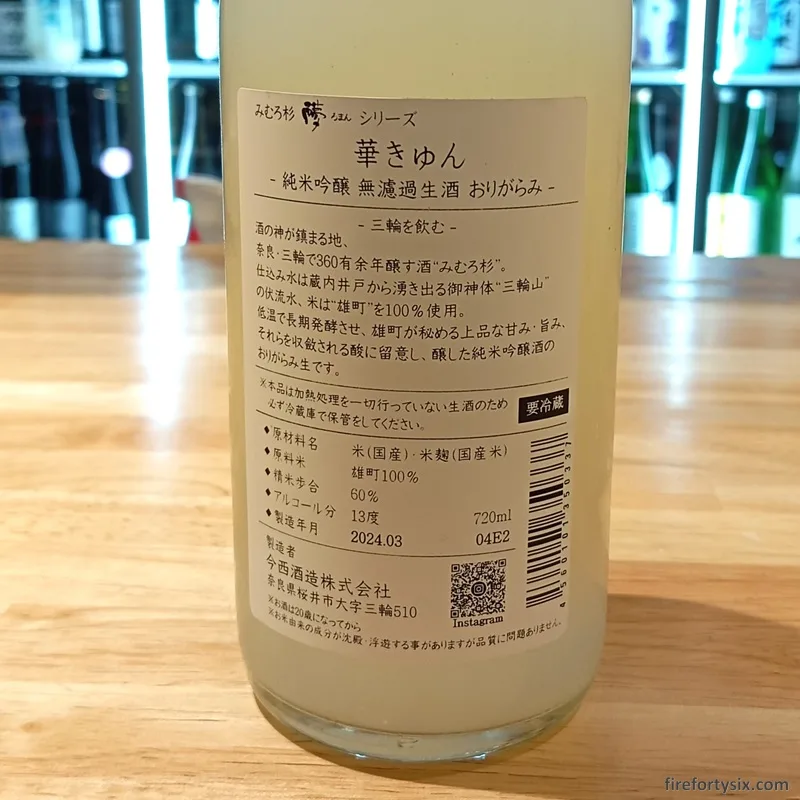
Zaku (作) Megumi no Tomo (恵乃智) Junmai Ginjo
The sake bar was getting crowded, with several groups of bar-hopping tourists and a steady stream of local regulars. One of them had been quietly observing us, and came over to check how I was doing with my sake bingo.
He introduced himself as Sonemantaro-san, and gave me an enthusiastic thumbs up after seeing how many boxes I had crossed.
“Can I recommend a sake to you?” he asked, wanting to get in on the action. And the sake he recommended was the Zaku, pronounced Zak! with the exclamation mark.
Of course we had to try it.
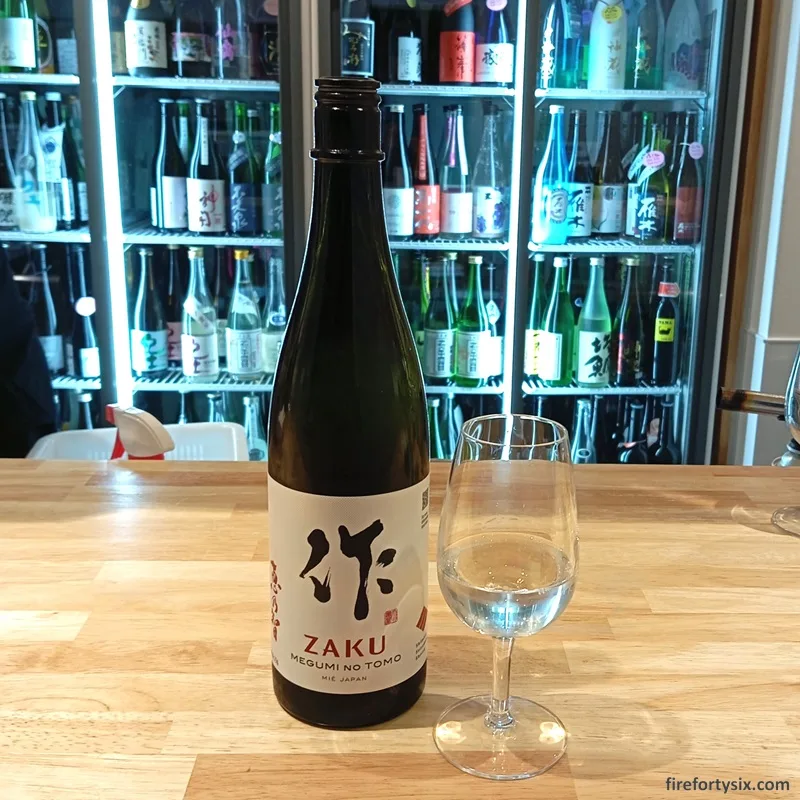
Strangely, Toshi-san appeared reluctant to pour us a glass. His brows were furrowed and his face bore a concerned expression.
“That’s the last bottle,” he grudgingly admitted, knowing full well that we’d probably like it and that I’d probably want to buy a bottle. He was right, of course.

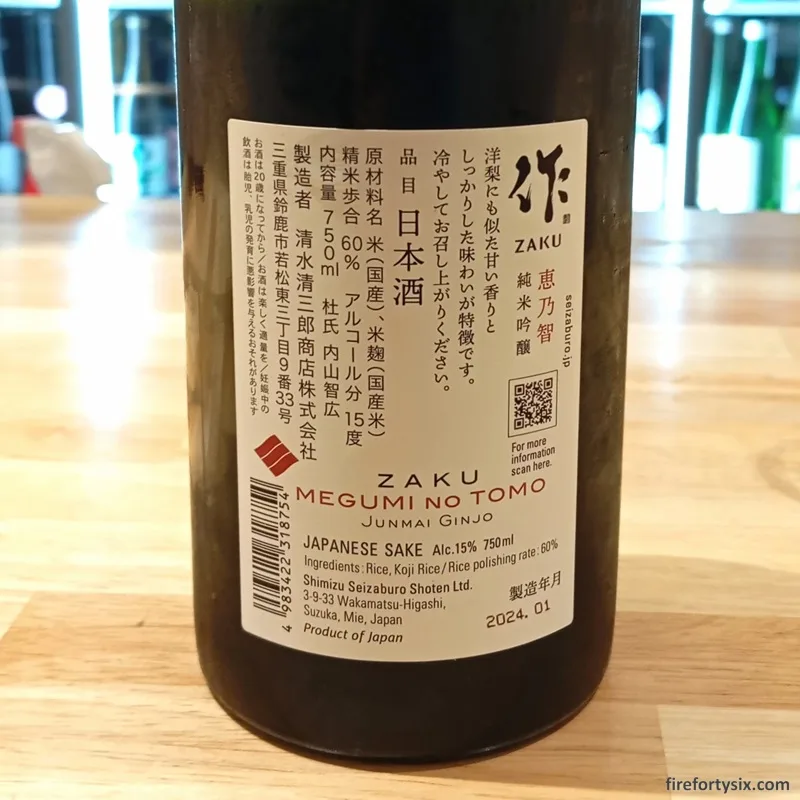
After the Zaku, I hit my blood alcohol limit and sadly had to call it a night. Much fun was had, and good progress was made on my 47 prefecture target.
The Wife and I ranked our favourite sakes that night, and #1 was the Zaku, followed by #2 Mimurosugi and finally #3 Yuki no Bosha.
Souvenirs
We lugged back three bottles of nihonshu to our hotel, but not before getting Toshi-san and Kohata-san to autograph their respective recommendations.
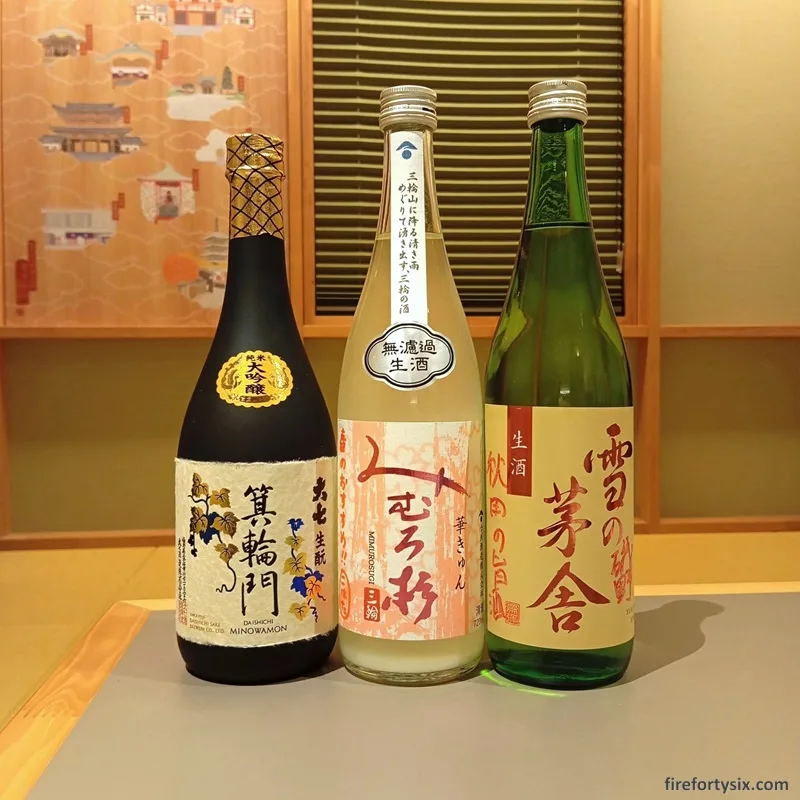
I guess Toshi-san must have been shy, because he only wrote “Essence of Akita” (according to Google Translate) and didn’t leave his name.
Whereas Kohata-san happily signed her pretty pink bottle, together with a chirpy “Spring recommendation!!”

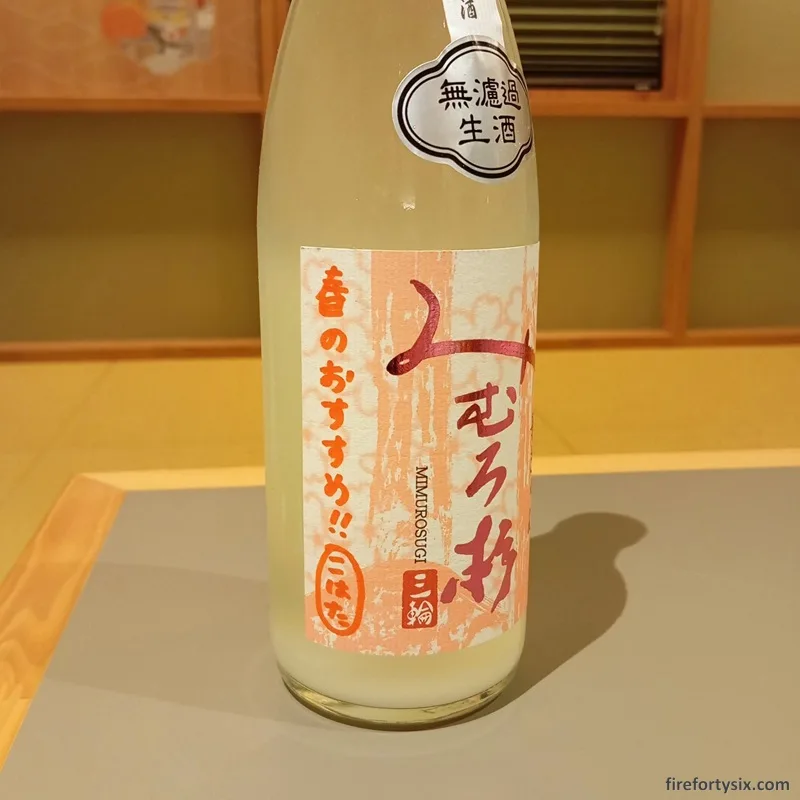
Location
Our visit to Asana Nihonshu Ten was totally unplanned, and only happened because we walked past it on our way to a coffee roaster that I wanted to check out.
It was a serendipitous encounter, but it turned out to be my favourite experience throughout our entire trip. So good that we went twice in the very same day.
Here’s the shop information on Google (4.4⭐/5.0 | 91 reviews) and Tabelog (3.27⭐/5.00 | 33 reviews). And if you happen to visit, please say hello to Toshi-san and Kohata-san for me!
